#do my ansys assignment
Explore tagged Tumblr posts
Text


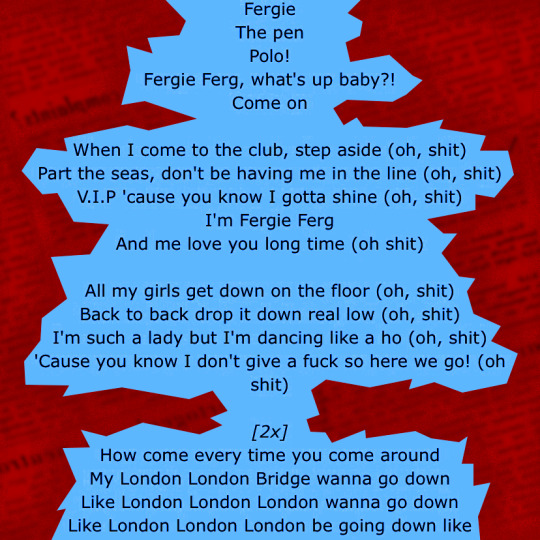

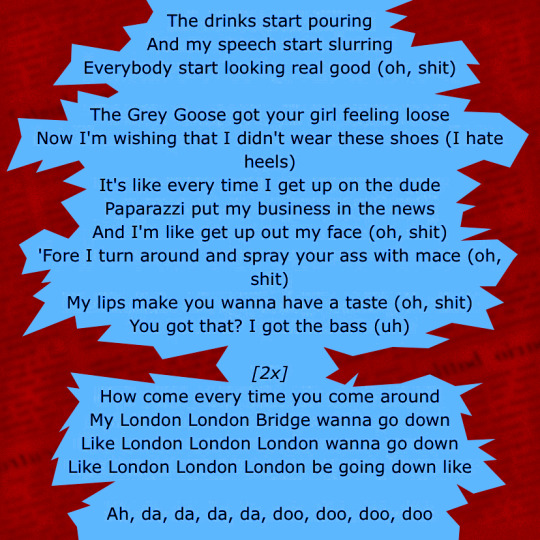
The Dutchess of Camden
Hobie wants to take Diane to her first punk show. And she has just the outfit. (a.k.a How Diane got her punk battlejacket - aka I saw this photo of Fran Fine and laughed so hard.)
DiscoPunk - DiscoSpider!Diane x Hobie Brown - PURE FLUFF. More fluff than a cappucino with extra foam. FLUFFY
Also this post was largely inspired by @spidey-bie and their post about Ansi & Hobie!!
______________________________________
Diane isn't punk.
With chiffon skirts and silk shirts and glittery nails and light up roller-wheels - if anything, she was the farthest thing from it. But that never stopped her, did it?
Without a doubt, she was still Hobie's #1 fan.
Hobie had only known Diane a couple of weeks - and it was only four months ago that he'd met her that in that darkened club, a Daiquiri on her lips and a joint at her fingertips.
And since then, the party hadn't stopped.
Hobie didn't have an explanation for it - but for some reason, Diane seemed to like him. If anything, she seemed to adore him. And that in itself wasn't a rarity -
She just wasn't afraid to show it.
Out of a room full of people, she'd be the one to approach him first. In a cafeteria full of tables, she was the one to ask if she could sit at his, just because 'y'all seem like you're having fun'.
And regardless of what anyone had to say about it, to Hobie - that only added to the appeal. Because Diane said it all the time -
'Closed mouths don't get fed - Ain't that right?'
Over the weeks, he'd gotten used to her face, front row at SpiderBand's every show. He'd gotten use to her laugh, and the way she'd smile every time he told a joke - no matter how unoriginal. How he could make her laugh without fail.


He'd gotten use to the way he felt when he knew she was there, safe somewhere nearby.
Like praying for someone to turn up to school that day, and then hearing that they did.
And did having her on his arm, his voice in her ear, an inside joke between the two of them - mean them anything?
Hobie didn't know. And he didn't care.
It didn't matter what Diane being at his side made her - as long as she wasn't going anywhere.
And so he'd bring her along for the ride, as long as she'd let him.
Hobie and Diane had known weeks, and she was never shy to invite herself, asking for permission to tag along any place that sounded funky enough for her to find it far out.
And he was never one to tell her 'No'.
But there was one place she'd yet to go - and that was 138.
"Oi, I'm taking you to a rock show tonight. It's in 138, so try to blend in, alright?"
"Of course!" she says. "I've been waiting for this! I have just the outfit."
And then she turns up in this.


Diane looks at him and goes "What'd I tell ya!"
She's so proud of herself. She thinks she's killing it. She brought that outfit the month she met him and she's been waiting for this moment.
She's like -

Hobie has to cover his face. Because if he looks at her - he's gonna start laughing. Cause what iN THE HELL-
Hobie looks at her like -



"Di, where'd you get that?"
She's like "Malala (Spider-UK). It's SO CUTE right. I look all posh!"
Hobie is like "You look like a Spice Girl. You look like Scary Spice and Ginger Spice had a baby."

Diane takes a moment to assess the situation. She reads his body language. And of course she's like "I feel very complimented but your tone of voice is saying otherwise, Hobart."
Cause what do you mean??? she absolutely understood the assignment!!!


Hobie takes a moment. He loves the enthusiasm, but still, he considers a way to break it to her softly, before telling her "Yo, me and my mates be setting that flag on fire-"
"Good cause it looks fire on ME."


And.. She's not lying. So what's the problem?!?
Hobie doesn't have one. And it'll be a frigid day in hell before he tells Diane to change - for any reason, clothes or otherwise.
He asks her if she'd dead set on wearing it, and she's goes "What- do you think the skirt is too tight to dance in? I can. Don't worry, I checked."
If she's going to have a good time, that's all he cares about. And Hobie just smiles, telling her if that's the case then the outfit is bloody perfect.
Because somehow Diane finding the most perfectly coordinated outfit regardless of crowd, vibe, occasion, or time of day, seemed so entirely her.
Not faking it for him in ripped fishnets or studded clothes. Turning up in her perfect black stockings and the most painfully British outfit she could find.
And it wasn't until she pointed to him, that he understood why. "I wanted to match - you know, your pin." she says, pressing a manicured nail to his lapel. "It's my favorite one."

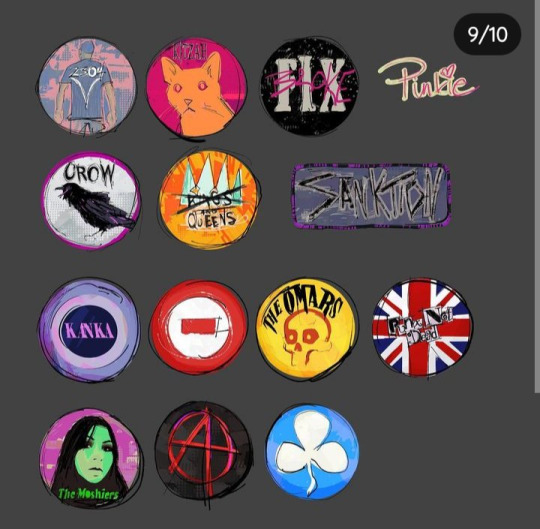
To him, the outfit is perfect. Funny as hell, but perfect.
"Brilliant taste you have." "Couldn't you tell from my taste in boys?"
The whole 'blending in' thing went out the window. But the outfit is a hit.
People couldn't help but notice the 6 foot girl who wore stilettos and a Union Jack to the function. A regular in the circuit, Hobie couldn't help but stay by her side - watching amused as she looked around the shitty backalley venue like it was a palace.
It was so different from the discos.
Diane couldn't help but marvel at how 'Hobie' the world seemed. "You're still the coolest thing here, though." She tells him over and over.
Hobie makes sure to keep an arm over her shoulder, not out of possessiveness, but the fact that Diane was liable to drifting off, eyes dazzled at how cool and punk and textured and rough everything seemed, how vibrant people were.
And Hobie loved it.
He wants her to love it, to enjoy herself. To smile and laugh and go on and on about how funky everything was. "But like - in a you way."
He wanted her to have a good time, but Hobie knew eventually, someone would say something.
And it came with a laugh.
"Christ, that's gotta be the funniest thing I've seen tonight." A guy wearing red liberty spikes said, and Hobie recognized him as Ned, a guitarist in some straight edge band.
And the girl at his side, Betty, grinned as she laughed along.
And Hobie wondered if he should scare them off, or give Diane a chance to bite their heads off first. Until Betty said-
"Fuck. I wish I'd thought of that."
"Huh?" Diane asked pointedly, seemingly more annoyed at the distribution of her Hobie-induced haze than anything else.
"Ain't that a giant 'fuck you' to the fascists - a black chick wearing their 'heritage' like it's the new spring collection - I'd pay to see the first skinhead that had a butchers at you," Betty said and she was a black girl herself, hair in neat boxbraids. "They'd be fucking fuming."
Diane side-eyed Hobie for a translation, and Hobie smirked, leaning in closer to her ear. "That's a good thing," he assured her, voice teeming with pride as he gave her shoulder a squeeze.
Because pissing off skinheads was very much a compliment.
Diane raised her eyebrows, because she surely couldn't tell. But, if Hobie said it, she was willing to take his word on it.
"Thank you..?" She chuckled, a hand on Hobie's arm. "Sorry, I ain't that good at speaking British. Hobie usually translates for me - Thank God he speaks American or I'd be so lost -"
"And she's American - that's fucking hilarious. No wonder she doesn't give a fuck." Ned said, grinning, pointing to her top.
And finally, Diane looked down - as if she'd just noticed what they meant.
"The flag?" She questioned, pouting her lips in confusion. "Am I supposed to give a fuck about the flag?"
"You aren't." Betty said. "That's what's so punk about it."
Her face lit up. Diane didn't speak British, but that she understood.
And she had to turn her face into Hobie's shoulder to not squeal. They said her perfect outfit was punk!
They said she was Punk!
Hobie stiffled his laughter, pulling Diane closer as he reached up to ruffle her perfectly curled hair.
Diane bit back her euphoria as she composed herself, flattered beyond belief. And to the pair in front of her, Diane said -
"Why, thank you!" mimicking a curtsey, head bowed and knees bent.

The pair burst out laughing.
And then, they did the same, playing along.
"Pleasure is ours, Your Majesty.~" Betty snickered, nudging Ned to get him to play along, and the dark-skinned boy did the same. "And to whom do we owe the honor?" he asked.
"Diane." Hobie said, squeezing her at the waist for a moment, and before she could tell them otherwise, Hobie said. "Call her Dutchess, yeah?"
Betty held back a snort. "Dutchess - She the Dutchess of Camden then?"
"Brilliant, you two." Ned said. "Leave it to Hobie to find a cheeky one."
Diane was glowing in his arms.
"The Duchess of Camden." Hobie said, a smirk coming to his lips. He adored the sound of it. "That she is. A national treasure, this one." And he believed it.
Hobie couldn't help but drink in the joy on Diane's face.
The name was so prestigious sounding - glamourous even - and Diane had no idea what the hell a Dutchess was, but she damn sure knew what royalty meant.
But nothing could compare to Hobie's words.

She pressed her hands to her cheeks, drinking in the flattery. And when she looked at Hobie her eyes were elated, dazzled to share the moment with him.
"Oh my, What a Prince Charming!" Diane laughed, wrapping her arms around Hobie. Who knew people in his universe would be just as cool, as interesting, as kind?
Who knew that not caring or thinking about British culture at all - not trying to make a statement, or say much of anything at all, could be punk? Hobie didn't.
Somehow, though, Diane managed to work miracles.
"Well, Dutchess," Ned said. "I take it you and Prince Charming here fancy a cordial invitation to the pub after this?"
Diane's jaw nearly dropped. "A Pub, like a Tavern?" And she couldn't imagine anything more British than a tavern. "Like the kind that serves pints? Just say the word and I'll call my horse-drawn carriage!"
Dutchess rode carriages, right? Who else would?
Betty shook her head, a grin on her lips. "Enjoy the show, Your Highness." she said, lacing her fingers with Ned's before weaving them back into the crowd.
For a second, Diane didn't say anything - cheeks glowing with the smile she was fighting back. Hobie wished he could make her feel that way forever.
"Well Punk royalty, how do you feel?" he asked, his voice low enough just for her to hear.
"You know," Diane said, turning to look at him, and slowly she laced her arms around his neck. "With this dimension time travel stuff - it's like you're the Punk Doctor Who, and I'm your companion, right? You know that British show, Doctor Who? The watch is like our Tardis-"
"Diane," Hobie said. "Never change."
__________________________
Hobie didn't know what this made him, but he didn't care.
He'd take Diane any place she'd follow. Any place she'd follow, he'd want her there.
Even here, on the curb of a street somewhere in London. Outside of a 24-hour Chip Shop at 3am.
Diane had followed him to 138 - and in return he'd followed her to a punk show. And then to an afterparty, and then to a pub, and then another.
And more and more people came over, to laugh and talk, to invite her into the community. And bit by her bit, her 'perfect' outfit had gained color.
A pin passed on from a friend, a patch someone would pull off their jacket, fishing for bobby pins to pin it to hers. A clover patch to match his pin, an A sprawled across the front like The Scarlet Letter.
Hobie couldn't describe the way Diane looked at him every time, the way she squeezed his hand and didn't let go. But that didn't matter. He just wanted her to do it more and more.
By stop two, she was complaining about her feet. But come 20 minutes, without fail - there she was, hanging on his sleeve. Asking him to leave so they could go someplace more her speed, 'hipper to the groove'.
And he'd always say 'Yes'. There wasn't a moment of it that he regretted.
He'd follow her anywhere, because he knew she'd do the same. And now, sitting on the curb on some random street in East London, Diane had the beginnings of her own battle jacket.
And a backpatch to match his, with her own addition:
'Punk's Not Dead.' 'He's back at my place.'
Hobie popped open the box of takeout, steam escaping as he lifted the flaps on the fish & chips. Beside him, Diane rolled her eyes in ecstasy at just the smell of it, throwing her head back in excitement.
Needless to say, Diane was plastered.
"You spoil me." she squealed leaning in closer to gaze at the sacred food that sat in Hobie's lap, her arm looped with his as the smell of fresh battered fish rose from the box.
Hobie lifted up a bit of fish, holding it out to Diane. "You ever tried this? Can't say you've been to London until you have. Like going to New York and leaving without the pizza." he smirked, eager to see her reaction - that look in her eyes.
Diane leaned forward, taking a bite of the fish without even taking it from his hand - too drunk to care.
"I don't know if it's because I'm drunk, or because I'm with you - but British food is so good." she snickered, stealing a chip from the box.
Carefully, she sniffed it.
"It has vinegar." he told her, watching as Diane nodded seriously, before pointing the chip at the box. "And that?" she asked.
"Mushy peas."
"Mushed peas?" Diane said, part bewildered, but mostly disgusted. "Mushed peas - is that what you said?"
Hobie snickered. "You ain't gotta eat them. I'll eat them if you don't want to-"
"You're gonna eat them?!" Diane demanded, jaw agape. "I was just complimenting you're national cuisine and now you're offering me pea sludge?" she laughed, almost in disbelief.
"You ain't gotta eat the pea sludge, Dutchess. Dump it in the harbor if you wanna kick off. That's what you all do, yeah?"
Now Diane's expression turned to shock. "Don't compare me to a Bostoner! As a New Yorker, I take offense to that." she said, stealing another chip. "You don't see me calling you a Birmingham-nite or whatever."
"Brummie -" Hobie corrected. "Surprised you know about them."
"I don't." Diane assured him. "I just know they exist."
Hobie grinned, taking a bite of fish, as for once - London seemed quiet around them.
No loud music. No crowd, or laughter, no anything. Just them. And Hobie realized that this was the first time they'd been alone - since that night they'd met, four months ago.
And he still felt the same as he did back then - in the alleyway behind the club, bathed in neon lights.
He had slipped into her world to find her - and now here she was, slipping in to his. And here, now, with her post-show hair, and smudged red lips, and blurred eye-liner. In her spray-painted jacket, and a hangover around the corner - he wouldn't have it any other way.
"Hobie -" Diane asked, eyes far away. "Can I ask you something?"
"You just did." he snickered, simply because he knew it would get her attention. Diane grinned, even despite herself, and she shoved his shoulder.
But he could tell, whatever it was - she meant it. "Anything." he said.
"Why do you.. let me follow you around?" she asked, and even to her, the words felt clumsy, clouded by nerves and 4 pints of beer.
"I mean - Why do you put up with it?" she asked, voice barely at whisper. And for the first time, it was like she couldn't look at him. And yet he couldn't look away.
"With what everyone says. I mean - I know that you hear it. And..I'm not subtle about it. But you never complain. Or tell me to go away. I guess at a certain point, a part of me thought that maybe you just...didn't want to hurt my feelings, I guess."
Diane said, trying to swallow the lump in her throat.
"But then, you invited me here. And you've been so kind to me all night. Even though I'm just some chick who shows up to your shows. And, I don't know how to thank you, or why you do it." she said, voice barely a whisper.
"Because I know that you care. Cause I can tell you do." Hobie said. "And I can tell you don't want nothing of me. You aren't asking me for romance or anything. We can just be together. Wherever. And that's enough. More than enough." Hobie said, and to him, the answer came easy. Now that it was her who was asking.
And maybe that was it. "We're enough for each other."
And she was more than enough for him. More than enough for him to watch to keep her around, and then some.
Diane's expression softened, the lump in her throat growing. "Thank you," she said. "For never making me feel like I was annoying. Or like I wasn't worth your time."
For making her feel like she was enough, always.
"You are worth my time, Daiquiri." Hobie said, and he reached up to brush a stray curl from Diane's face. "Don't want you to ever think otherwise. I don't know why you do it - what I did to deserve it.
But it doesn't matter. I ain't letting you get rid of me now."
Beside him, Diane grinned, hanging her head in bashfulness.
"I'd kiss your cheek right now, if I didn't smell of fish and vinegar right now." she told him, and instead, so instead she pressed a kiss to her fingers, before smooshing it in his face.
Hobie snorted, grabbing her arm and pulling her closer. Pressing kisses to her forehead, even as she faked a grimace. Because he didn't care about fish or vinegar or anything else. Just her.
Diane laughed, shoving away from him just as Hobie asked "And what about you?"
"What about me?" "Why do you do it?" he asked. "I mean, could have any bloke on any Earth. But you choose me."
And he would never understand it, but he would always be grateful.
For a moment, Diane had to think about it - and Hobie wondered if she ever questioned it herself. Or if she just did what made her happy, and worried about any bridge when she came to it.
Diane shrugged a bit, stealing another chip as she thought, eyes lidded and voice quiet under the haze of alcohol.
"I dunno. You make me feel safe, I guess." She said, and maybe it was that simple. Because saying it felt right.
"I don't have to worry - about you laughing at me, or judging me, slutshaming me. You don't think I'm stupid, or annoying. I mean, you let me wear this outfit, you made me feel good about it. So I trust you."
Because she could tell he cared too.
Hobie grinned, leaning forward to brush his nose against hers, their own form of kiss. "And that's enough for you to treat me as good as you do?"
"I mean, we met when I was shitfaced drunk." Diane said, well aware she was probably shitfaced right now. "In a club, basically throwing myself at you - and you somehow got me home and into bed." And she snickered at the memory alone. "You even put my bonnet on me."
"You were there the first time I saw the Sun. Or a sunset. I guess I feel like if you're there, it'll be okay. Or like, super far out - groovy, psychedelic, absolutely dynamite!"
She laughed. "Like tonight. Thanks for tonight, Hobie."
"Anything for you, Dutchess." he told her.
"Look at you, treating me like Queen Eliza." "Elizabeth." "Does it matter?"
Did it matter what they were?
"Not at all."
Because they were enough.

_-_-_-_-_-_
"Are you actually going to eat the pea sludge?" "What, is that a crime, your highness?" "No, but it should be."
_____________________________________________
Hobie will keep Diane ignorant about British culture, if it's the last thing he does. He finds it really, really funny.
And that's the story of how Diane got her punk jacket, why Hobie calls her 'Dutchess', and why they stick with each other through everything. UUHHHH N-E-WAY I think this might be like my first DiscoPunk fic holymotherof!!!!! I LOVE THEM. I LOVE THEM. I LOVE THEM I LOVE THEM. Let your OCs be loved. If you read this far thank you so much! It genuinely means a lot, so thank you for your time! In an act of gratitude here is Hobie


(thats them im gonna go cry)
#Diane: British people are so silly and funny look at me I'm Bri'ish#Pavi: look at I I'm Bri'ish I like stealing other countries artifacts#I LOVE NON-CONVENTIONAL RELATIONSHIPS#MY BABIES MY BABIES#spiderman#atsv#spider man#marvel#across the spiderverse#hobie brown#spider punk#spiderpunk#NOT proofread but full of LOVE#spidersonas#spidersona#hobie x oc#hobie brown x oc#oc art#my ocs
102 notes
·
View notes
Text
Techpunk Royalty AU Idea
Hobie had been by Ansi's side for as long as he could remember. He remembered the day that he was first assigned as his personal knight.
The prince was only a young boy but had such a cold and stoic demeanor. The Knight had seen a number of corpses in his lifetime but he had never seen such lifeless eyes. Daily the boy had to endure rigid lessons and training in order to ready himself for the throne. His mother taught each lesson with an iron fist, never failing to spare the rod if she felt that his efforts weren't up to her expectations.
Though the young Knight knew there wasn't much he could do to change the situation he made it his goal to make the prince happy.
It was hard at first but the day he first heard the prince laugh was when he realized his efforts were worth it.
It wasn't long before they grew to be inseparable.
However, things changed once the Queen died. Too many people felt that Hobie had gotten too close to the prince. Soon after the funeral he was sent away under the guise of a special mission.
The prince was left alone completely surrounded by those who wished to use him for the crown. The corrupted nobility began to enact out their twisted games in order to gain more power.
Ansi tired and longing for his beloved slowly becomes that unfeeling and stoic person from his youth. It wasn't long before he put an end to his vassals blatant disrespect and greed. He made them an example and displays their severed heads along the gates of the palace.
So began his reign of tyranny.
Hobie on the other hand has been fighting off assassination attempts, sand storms, wild beasts, and illness all to make it back to his beloved and yet when he finally arrives back at the palace to find that nothing is the same as it was before
The garden where they snuck away to hide from their instructor has been turned into an armory.
The kind servants who he had grown alongside him with had all been replaced.
Even the castle itself seemed different. The halls seem more somber and dreary.
He couldn't understand how things turned out this way until he saw the King.
This wasn't the man who he had devoted his life too. His beloved prince had become the very thing that they were hoping to destroy.
"My Knight I know that it's taken quite a long journey for you to make it back to me."
He smiles but it's only for show. His eyes held an indiscernible emotion that Hobie couldn't place.
"I wish to reward you for your valiant efforts but first," He says as he walks towards the knight. "I must ask something of you."
He dismisses everyone from the room. The King reaches out to rest his hand against his beloved face but the knight jerks away with a look of disgust.
The King chuckles sadly.
"You were never able to hide your true emotions from me."
"Get on with your favor so I can get going."
"I can't let you leave, beloved."
"Don't call me that."
For a moment Hobie thought he saw a pained look in Ansi's eyes but it was gone as fast as it came. The King cleared his throat and continued.
"I know you. I can already see the cogs of a revolution whirling around in your mind."
"So what, you're gonna kill me?"
Ansi chuckled.
"And waste such valuable talent? I think not."
"Instead I offer you two choices. Join my side or," He pulled his sword out of its sheath. "kill me and take the throne for yourself."
"And let the kingdom label be a traitor and execute me immediately after?" Hobie scoffed. "You're insane."
"I thought so too but my mind is the only thing that's remained intact over the years."
The Knight didn't give a reply he only looked at the sword in the King's hand.
"Don't worry. You'll be able to take over the throne with ease. I can call in a vassal to confirm if you so wish."
"No." He grabbed the sword from the King's hand. "I think this is the only truthful thing you've said in a while."
"It seems you've made up your mind then." The Knight glanced remorsefully at the King.
"Surely there's another way?"
The King sighed and looked down. His knight had always been a merciful person.
"You once told me that those who've spilled blood can only pay for their sins with blood. Don't tell me you've turned soft now?"
"Any last words?"
The King thought for a moment before looking up at the Knight again. "No."
He smiles sadly at the Knight.
"Do you?"
The Knight often thought of what he'd say to his Prince once he returned.
Those words were meaningless now.
"No."
@hobiebrownismygod @i-like-moths-and-men @ponfarrtimeatthevulcannightclub @chessbox @pinkpinkspidey
#did i get lazy at certain parts?#yes yes i did#but you still read it so hah#hobie x oc#my spidersona#au idea#Ansi and her Bie#atsv angst#angst#cory writes#jay and the spiders
28 notes
·
View notes
Text

Mastering Ansys Assignments: Your Ultimate Q&A Guide
When tackling complex Ansys assignments, having a clear understanding and the right approach can make all the difference. At Mechanical Engineering Assignment Help, we recognize the significance of expert guidance in achieving success. That's why we provide top-notch Ansys Assignment Help to support you through your studies. This Q&A guide will address common questions and offer insights to help you excel in your Ansys assignments.
Q1: What is Ansys, and why is it important for mechanical engineering assignments?
A1: Ansys is a powerful simulation software used extensively in mechanical engineering to perform finite element analysis (FEA), computational fluid dynamics (CFD), and other simulations. It helps engineers predict how products will perform under various conditions, which is crucial for designing and optimizing mechanical components. Mastery of Ansys is vital for accurately completing assignments and real-world engineering tasks.
Q2: How do I get started with Ansys for my assignment?
A2: To get started with Ansys, first familiarize yourself with its interface and basic functionalities. Begin by defining your project requirements and setting up the geometry of your model. Next, apply the necessary boundary conditions, mesh the model, and run simulations. Ansys offers various tutorials and help guides that can assist you in learning these steps.
Q3: What are the common challenges students face with Ansys assignments?
A3: Common challenges include setting up accurate boundary conditions, meshing issues, and interpreting simulation results. Students may also struggle with complex geometry or understanding how to apply specific material properties. Seeking help from experienced professionals or utilizing detailed guides can help overcome these difficulties.
Q4: How can I ensure accurate results in my Ansys assignment?
A4: To ensure accuracy, it is crucial to use proper meshing techniques and verify boundary conditions. Validate your model by comparing results with theoretical calculations or experimental data. Regularly check for convergence and refine the mesh as needed to improve solution accuracy.
Q5: What resources are available if I need further assistance with Ansys assignments?
A5: Numerous resources are available for additional help with Ansys assignments. Online forums, official Ansys documentation, and tutorials can provide valuable insights. For more personalized support, consider consulting with experts or using dedicated assignment help services like Mechanical Engineering Assignment Help.
Q6: Can I get help with my Ansys assignment from Mechanical Engineering Assignment Help?
A6: Absolutely! At Mechanical Engineering Assignment Help, we offer expert assistance with all aspects of Ansys assignments. Whether you need help with model setup, simulations, or result interpretation, our team of experienced professionals is here to guide you every step of the way.
#mechanicalengineeringassignmenthelp#ansysassignmenthelp#college#student#university#assignmenthelp#ansysassignment#onlinehelp#assignment#ansys#mechanicalengineering
0 notes
Text
Q2: A Goal Check in With Myself
At the start of the year I made 10 “Big Picture” Goals. Here is an update on my progress.
I am doing this to keep track of goals, update the goals, provide myself with some recognition, check in with myself, celebrate my accomplishments, reevaluate goals, and hold myself accountable.
1. Keep track of Monthly spending
I have done a very poor job of this in Q2. With all of the trips that I went on and with Alex’s wedding coming up, I’ve been spending a lot of money. I need to keep better track of what my money is going towards and hold myself to a stricter budget. The best thing about my spending habits has been that I got an $11,000 raise so I have a bit more disposable income.
2. Get a promotion/raise
I FINALLLY got a promotion!!!! I interviewed for two positions at NSF that moved me up the ladder two places! I am now a level 5, salary employee and the best part is that I work completely remote! With this, I’ve set a new goal to go on a solo trip and work from there! So far I’ve done all of the onboarding assignments and have begun working on writing projects to draft new language for the standards used by ANSI and water management systems. My team is great and I love learning new skills.
3. Run a 5K non-stop
At the start of Q2 Madison and I were going on daily walks, we would sometimes run, and even woke up before work some days to get some exercise in. We fell off the wagon on that one so I know I need to step it up in Q3. Hopefully working from home will allow me to set a new routine and start prioritizing my personal fitness and health.
4. Do something charitable each month
Over the past few months I have done a lot. I became penpals with Tony, I hosted a craft night, I donated to several charities, I spent one day a week with my mentee at the orphanage, I did some yard cleanup in the neighborhood, and celebrated earth day by doing garden swap and perennial exchanges with some of the locals.
5. Emphasize Self Care/Love one “Me day” per month
I have been going to therapy weekly, which was a huge hurdle at first but I am really proud of myself for taking this step in becoming the best version of me. I also invest in myself by doing my nails, buying new outfits that make me feel confident, and allowing myself to relax. I realized that I put a lot of time and energy into doing things for others and making sure that they are happy. I often put my own needs aside to appeal to others and I am working on choosing myself.
6. Build a garden, develop landscaping, make outside of the house pretty
I bought 6 flats of flowers and lots of veggies! The front looks AMAZING! I made a retaining wall and planted bright purple and pink petunias. I also have impatients in the back and zinnias in the half circle. I did a few perennial exchange events. I did a lot of weeding. I actually have a lawn to cut! My garden is thriving and I have zucchini, tomatoes, peppers, lots of herbs, cucumbers, and strawberries!
7. Less consumption/waste
I am still composting everything that I can, recycling what I can, and avoiding buying foods that I’m not going to eat before they go bad. I am also not really driving as much so I’m lowering my carbon footprint by driving less. Since I am growing veggies I will hopefully not have to consume as much from big box stores too.
8. Stay up to date with current affairs
I have not been doing so great with this, though I did vote in a local election!
9. Meditate 150 sessions.
I logged less sessions in q2 than I did in q1 but I was able to schedule 10 minutes of my work day each day for reflection/meditation/goal setting. Moving forward I should have more consistent practice with mindfulness.
10. Get accepted into a graduate program
I ACCEPTED AND CONFIRMED MY ATTENDANCE FOR CMU’S MASTER OF PUBLIC HEALTH PROGRAM!!!!!!!!!!!!!!!!!!! I start school in a cohort program in August!! WOOOHOOO!!
1 note
·
View note
Text
Totalterminal el capitan

#Totalterminal el capitan mac os x#
#Totalterminal el capitan code#
#Totalterminal el capitan windows#
Built-in TFTP server provides additional file transfer flexibility.Crashy/hangy (seems to be fixed in ) Can do focus-follows-mouse. VT100/102/220, ANSI, SCO ANSI, Wyse 50/60, Xterm, and Linux console emulations are supported - all with ANSI color and color schemes.Unicode. This page is intended as a primer for my problems with the current state of OS X terminal emulation I'll give it to anyone to read before they start suggesting solutions. Overstrike as bold (update: fixed in Leopard!) Can do focus-follows-mouse in 10.3.9 but not 10.4.x? (update: seems to be working in 10.5.5 after following these instructions again) I'm only going to list things that I know annoy _me_ (enough to write this page), and not a complete buglist or potential-annoyance-list.So, without further ado, the issues: Terminal.appThe emulator that comes with OS X. TinTin++ features an advanced automapper, scripting language and VT100 interface.
#Totalterminal el capitan windows#
The Windows port named WinTin++ (using the PuTTY derived mintty terminal) is available for those who do not use Cygwin (A Linux/Unix emulator for Windows) and runs on Windows Xp, Windows Vista, Windows 7, 8, and 10.
#Totalterminal el capitan mac os x#
Guake depends on the See also.TinTin++ ManualMac OS X terminal emulation notes Mac OS X terminal emulation notes IntroductionTinTin++ features an advanced automapper, scripting language and VT100 interface. The developers of Guake will not maintain this branch actively.
#Totalterminal el capitan code#
Old releases and code depending on GTK2 can be found in the 0.8.x branch. This version also dropped support for Python 2. Version 3 Version 3.0.0 was ported from 2 to GTK+ 3. Guake follows the same line of and, but it is an attempt to meld the best of them into a single GTK-based application. Rationale Running Guake is faster than launching a new terminal with a because the program is already loaded into memory, and so can be useful to people who frequently find themselves opening and closing terminals for odd tasks. So I'm back with my old combo (Terminal.app + iTerm2) and it's close to ideal. Thus you can easily use Apple's Terminal in a way you used Visor (except for the animation). And they can be switched on and off (hidden) with the same shortcuts. A tine app called can assign global keyboard shortcut to any application, script, etc. ITerm2 itself seemed not enough for me when I moved to El Capitan.īut there's a way to closely replicate my old setup. I had Visor sliding from top down and I used iTerm2 too, depending on task etc. Before OS X 10.11 El Capitan I used TotalTerminal (Visor) and I loved it. While iTerm2 suggestion is a good one, it has a few problems of its own. To make it look like a Quake drop-down terminal, you can use similar 'Window' preferences. You can customize the settings for the 'Hotkey Window' profile under the 'Profiles' tab. With default settings, the Hotkey Profile window will stretch across the top of the screen, and the hotkey will drop the window down from the top, complete with animation. Check the 'Hotkey toggles a dedicated window with profile:' option and choose 'Hotkey Window' in the popup menu below (should be selected by default). In the bottom left, under 'Hotkey', check 'Show/hide iTerm2 with a system-wide hotkey' and assign the hotkey you'd like to use. In iTerm2 preferences, click on the 'Keys' tab. You can use iTerm2's system-wide hotkey with the Hotkey Window profile to do this. Quake II won Macworld ' s 1999 'Best Shoot-'Em-Up' award, and the magazine's Christopher Breen wrote, 'In either single-player or multiplayer mode, for careening-through-corridor-carnage satisfaction, Quake II is a must-have.' If you frequently use Windows' Command Prompt utility, you might want to find a quicker way of accessing it and that's when third-party apps like WinGuake step into action.

0 notes
Text
okay so i'm going to use the programming one because it's easier to explain but this applies to both of them and more !!! but i physically do not have the time to manually draw every parallel
I ɴ ᴛ ʜ ᴇ ʙ ᴇ ɢ ɪ ɴ ɴ ɪ ɴ ɢ there was M ᴀ ᴄ ʜ ɪ ɴ ᴇ C ᴏ ᴅ ᴇ . so in order to write programs you only had one choice which was to constantly look up the operations you want the computer to do. then there's A ꜱ ꜱ ᴇ ᴍ ʙ ʟ ʏ (should also be in the Prepreminimalism category), which assigns easier-to-remember mnemonics to those numbers. then you have F ᴏ ʀ ᴛ ʀ ᴀ ɴ , A ʟ ɢ ᴏ ʟ , & B ᴄ ᴘ ʟ . FORTRAN and ALGOL were highly influential programming languages and their decisions still exist to this day. they existed after assemblers and made programming easier by being significantly higher level than assembly, which is not that high of a bar. BCPL is better known as the predecessor to C . then there's B, C 7 8, & M ɪ ᴄ ʀ ᴏ ꜰ ᴏ ʀ ᴛ ʜ . B was derived from BCPL, and C78 grew out of B by gradually adding features into the compiler. MicroForth on the other hand was the first version of Forth, and was written in assembly. Forth is a whole other can of worms, but the reason why it's here and in the Minimalism category is because it was intentionally designed to be composed out of as few distinct features as possible. it specifically aims to not take up a lot of memory or code to implement, and for programs written in it to do the same. (fun fact: Forth originally used direct threading, and Chuck Moore straight up pioneered indirect threading while working on it. B also began by compiling to direct threaded code before it switched to a more conventional IR kind of situation). C78 is also fairly minimalistic as a language, too, for similar reasons, but not to quite the same extent as forth. then there's C 2 3 & A N S F ᴏ ʀ ᴛ ʜ . ANS Forth is a standardization of Forth by ANSI (they also standardized C89/ANSI C and ANSI Common Lisp). C23 is a very recent wait 2023 isn't recent anymore Relatively Recent* standard for C. while C78 was possible to implement in a few months, and forth was realistic to implement in hours (given enough experience. experience that i am Acquiring but do not yet Have unfortunately), C23 and ANS Forth are uh. not so shrimple. C23 in particular has a lot of very nasty things with regards to compiler development (oh my god the auto keyword changing meanings from C78 but only half the time™ is like. a Meme Proposal i would come up with. i cannot fathom how they thought this would be a good idea), as well as a colossal standard library, and ANS Forth is similarly gigantic and has an identity crisis over where it uses ꜰ ɪ ʟ ᴇ s or ʙ ʟ ᴏ ᴄ ᴋ s. then there's ᴄ ᴏ ʟ ᴏ ʀ F ᴏ ʀ ᴛ ʜ. colorForth takes inspiration from ANS Forth while also introducing a whole bunch of other developments, and returns back to the original minimalism of Forth. one dialect of colorForth happens to be used in a few chips that Chuck Moore developed and that dialect is so insanely minimalistic that it became the assembly language (every individual forth WORD (keyword/operator/function/number) became it's own instruction on the processor), which comes full circle, hence why it's horseshoe.
hi i have a crackpot theory that just appeared in my brain
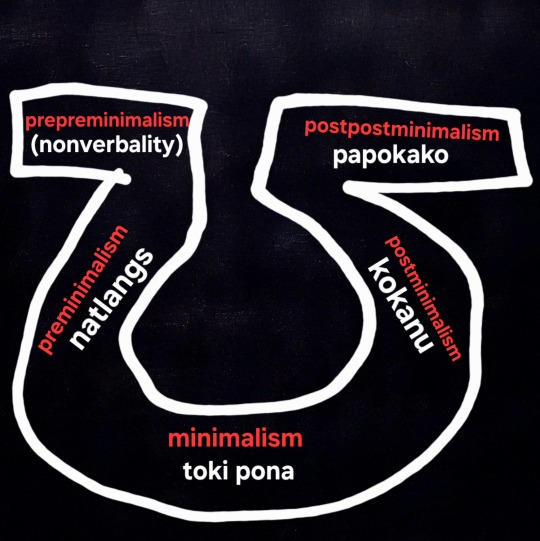
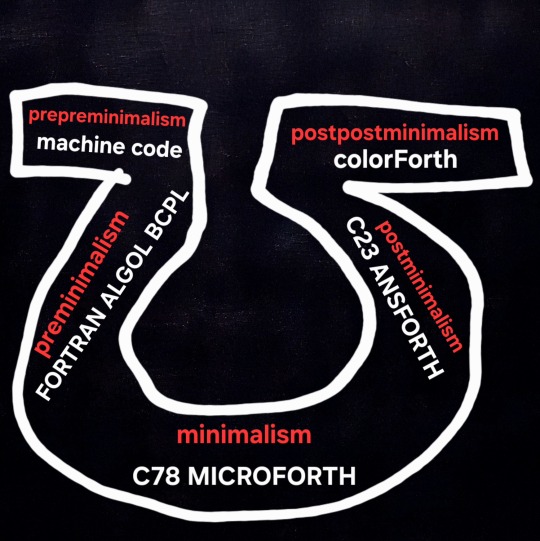
remind me tomorrow morning to explain it bc right now its MIDNIGHT and i do not have the time nor energy to explain it Goodbye
15 notes
·
View notes
Text
Having Hobie assigned to a mission with Ansi still isn't a guaranteed way to make her do anything. (You're better off bribing her with Tech ngl)
What's most likely gonna happen is that he's gonna talk Hobie out of going on the mission too.
Hobie: Sisi (pronounced zee-zee btw) we've just got a call from Miguel.
Ansi: Now why in the world would I leave my bed when I could be spending my whole day with a pretty boy in my arms?
Hobie:.....
Hobie: They'll be alright
#it doesn't take much for her to get Hobie to comply#she knows exactly what to say everytime#hobie: we gotta go#ansi: but that'll mean less spoons for me to kiss you 🥺#now Hobie's all giddy and Ansi gets to stay home#its a win win#Ansi and her Bie#hobie x oc#my spidersona#jay and the spiders
15 notes
·
View notes
Text
Ce que le dictionnaire anglais Oxford ne vous dit pas à propos de avis vpn
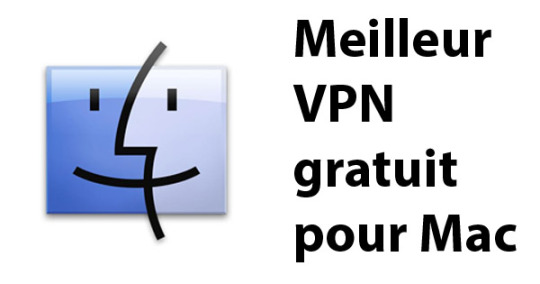
The global current market has expert the rise equally in demand from customers and provide of investigate chemicals in the past years with a wide range of chemical substances getting introduced for industrial uses. Investigate chemical substances like 25B-NBOMe and other derivatives in just its course like 25C-NBOMe and 25f-NBOMe also has seen its shares of raising demand from customers due to confined offer it presently have out there. 25B-NBOMeor additional popularly generally known as Cimbi-36 has effects corresponding to the methamphetamine as well as the hallucinogen mescaline stimulant On the subject of its chemical construction. The 25B-NBOMeserves asa stimulant to our method and this is a psychoactive drug as it has psychedelic Attributes.
Today, you can obtain no cost samples chemical investigate china produced substances possibly in crystal or powder form. However, you'll need to ensure that the sample you happen to be obtaining is from the trustworthy source which can guarantee to present you with the very best chemical investigation possibly be it 25C-NBOMe or other sorts of analysis substances. Meticulously weighing your choices out there will Ensure that you have the proper chemical with the correct quantity from the correct supplier. Despite the fact that investigate substances like 25C-NBOMe is rather lawful in many nations like America, there are sure guidelines you need to abide by to make certain that you're obtaining the proper 1 without having breaking any lawful process or https://5f473a4054a69.site123.me/#section-5f473b3d75fdc legislation.
It is only appropriate to check with without cost samples of chemical exploration whether it is China produced or or else to be sure you are getting the proper chemical mixture you specified in your order. A no cost sample implies the producer is for certain about the standard of the research chemical substances they supply and this also reveals that they've the potential to supply Anything you asked for. A lot of people who get study chemical substances even go to the extent of undertaking a background check just to ascertain The reality that the company without a doubt has the ability to provide whatever they decide to buy Later on. But most of all, it is important to ensure that the investigate chemicals you plan to purchase is not banned in your nation. Even whether it is authorized in China, it doesn't imply that it is also legal within your nation.
On the other hand, freshly found out chemical substances that aren't however controlled or managed by any govt entire body is lawful to get. A superb example of This can be the 25C-NBOMe. This chemical has perception altering composition but because no more scientific tests have finished nonetheless and it is still under in depth exploration, such a substance is still authorized. Getting totally free samples chemical analysis China is not inquiring a lot of and you can find investigation corporations which can be keen to provide them just so that you can show that whatever they are supplying are legit.
SQL or Structured Question Language Server is actually a Relational Databases Administration Procedure (RDBMS). It is actually intended to contend business ecosystem versus My SQL and Oracle Databases (DB). It operates on Transact -SQL (T-SQL), a combination of Sybase and Microsoft's programming extensions. Owing to T-SQL, the standard SQL is supplemented with various attributes together with error handling, declared variables, row processing, exception and transaction Manage. In addition to T-SQL, its have implementation, SQL Server contains SSMS (Server Administration Studio/ Business Manager), which supports sixty four and 32-little bit environments and is also a most important interface Instrument. Comparable to all RDMS, it supports ANSI SQL, which is the standard SQL language. It operates in almost any of two authentication modes: Combined Mode or Home windows Authentication Method (default)
Furnishing password safety to the SQL Server proves your identification to your procedure, besides it provides privateness from the one who is not allowed to entry the information. It works as someone identifier and will be acknowledged to the exact same particular person. It ought to be saved in a secure fashion and consistently modified. If you are putting in it, login the server with Windows Authentication, if you select mixed mode authentication, login it with SQL Server Authentication. In Home windows Authentication, person can only assign the password right after entire set up. Nevertheless it is not the case with Server Authentication, exactly where the person can assign password throughout installation.
Customer connections arbitrates the security manner decision. If the incoming clientele do not guidance trustworthy connections, it really is suggested that you select Combined Mode. If all of your clientele aid reliable connections then go for the default method or Windows Authentication Manner. Getting a SA or Technique Administrator password could be the have to. It authenticates your id for the program. By making use of SA Password, the administrator has total access above the person information.
In case you have neglected your Structured Query Language Server SA password and Should the Home windows account resources that you don't have authority to alter it, consider these ways to reset your password:
Method 1 : Endeavor to operate the subsequent commands to the command prompt (assuming your Server title is SQLEXPRESS):
Immediately after running these methods around command prompt, attempt login in While using the new user title sa and password changeme
System 2 : When you've got other SQL Server Login, which is a part of sysadmin part, try login in from that account and reset the password.
System three : If you have other Home windows Login, endeavor to login working with that. Commence SQL in Single Person mode.
youtube
0 notes
Photo

Assignment writers at My Assignment Services offer students to get their Ansys assignment help online customized! What they need to do is to place an order for their required subject and they can have it on their table before time. The availability of the expert solutions at Ansys assignment help makes the projects more reliable and ensures the guaranteed success of the students.
0 notes
Text
GASPARILLA DISTANCE CLASSIC – February 22 & 23, 2020
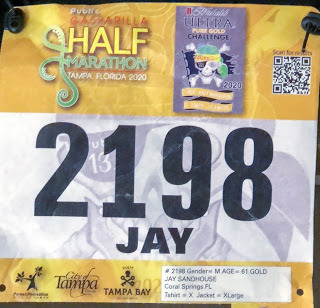
Just when you think your favorite race weekend could not get any better, the bar is raised to a point that would be hard to beat. I’m getting a little ahead of myself, so let me start from the beginning.
One of the classes I teach at FIU is Multimedia Production I (RTV 3531). An assignment the students have to do is to record and edit a chroma key segment, also known as a green screen. I always provide them an example to follow, so I recorded and edited one myself. My segment was called “I Am a Runner” (catchy title, just like this blog). I talked about my favorite race weekend, so no script was necessary. In fact, I actually “nailed” it on the first take. Once it was edited and posted on YouTube, I sent the link to the race director Susan; I thought she would get a kick out of it. Boy…was that an understatement. Susan called me and said the video was AMAZING. “And when I say amazing, I mean amazing in all caps.” Not only that…she also asked if she could post the video on the landing page of the race website. I was thrilled and honored, and told her I would help with any videos she may need in the future. I sent her the link to this blog, in which she replied: “You continue to amaze me with your lovely words about Gasparilla.”
youtube
While Running the Mayberry Half Marathon, I convinced Elaine to enter Gasparilla; it would be her first time. Lindsey was on the fence for the weekend, mostly because Miami was moved up one week this year. After twisting her arm for several months (and taking care of her race entry and airfare), she succumbed to my pressure. Elaine also helped in turning up the heat. Mary and Doug were all in as well, and we then got word of a special guest appearance by Pam. THE BAND WAS BACK TOGETHER AGAIN! This would certainly be a weekend to remember.
Everyone would be arriving around the same time on Friday except Elaine. Her flight was coming in at 10pm (she could not find a direct flight any earlier 😩). The host hotel this year was the Embassy Suites Downtown Tampa, which is connected to the convention center where the race expo is held. This is the first time since I’ve be doing this race weekend that I would be staying here; boy…it did not disappoint! Lindsey, Mary, Pam and I grabbed lunch, as Doug was still in route. He met us at the restaurant, and we made our way to the expo. I called Susan in the hopes of meeting her in person, but obviously she was super-busy (I would continue to pester her throughout the weekend; I’m really sorry for being such a noodge Susan). I really liked the race shirts this year. They were very colorful and a departure from previous years. The challenge jackets were colorful as well, but I miss the windbreaker style from four years ago. Asics was now providing the official merchandise for the races, replacing Under Armour. They were selling really snazzy looking compression sleeves, but ran out in the first few hours. I hope they eventually replenish their supply. This is a great expo, with lots of good vendors, and plenty of room to walk around (Miami Marathon…please take note).
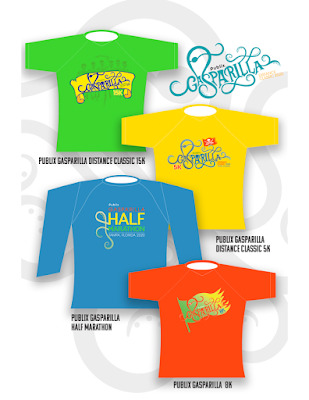


The weather for this weekend was pretty cold, which was great for me, but a bummer for Lindsey. As we made our way down for supper, the temperature was around 51˚, and extremely windy. On top of that, our dining experience was extremely unpleasant (I won’t mention the name of the establishment, as that’s not really the purpose of this blog. I’ll say it was a sports bar, and leave it at that). Besides waiting 30 minutes to be seated, we also waited one full hour until our food was served. Our server acted nonchalant (as if it were her first day on the job), and the manager didn’t really seem to care. He gave us 50% off the bill, but we felt as if he should have not made us pay anything at all. On a positive note, the food was very good.
Hereis the breakdown for all four races:
5K 12,022
8K 4,723
15K 5,480
Half 5,050
A total of 27,275
As we met in the lobby at 6:30am on Saturday morning, there were two “medical updates.” First, Mary had deferred her race entries, and would not be running this year. Second, Lindsey had been having knee pain, due in part to a tight ITband. Her status for the Michelob Ultra Pure Gold Challenge (15K on Saturday and Half Marathon on Sunday) would just have to unfold. It was 41˚ at the start of the race, with not very much wind at all. The running strategy was as follows: Pam would run with me, Elaine would run with Lindsey, and Doug would do intervals. The gun sounded at 6:45, and we were off. It was great to do a race with Pam again, as we always have the best conversations when we run. I had recently purchased a percussion hammer, and worked myself over for about 20 minutes before the race. Wow, did it make a difference! This race was effortless for me, and I only needed to stop twice to pee. This may be a PPR (personal piss record). The wind was at our back for the first part of the race, which was a good thing. As it became warmer towards the end, it was good to have that cool breeze in our faces. My time was pretty slow, but extremely enjoyable. As we met the others at the finish line, Lindsey told me her knee started to hurt after the first mile, and she had to walk the last two miles (sadly, she still finished ahead of me). I was saddened to hear that she would have to skip the half marathon on Sunday, but I’m sure she was bummed out more than any of us.






We made our way back to the hotel for breakfast…and what a breakfast it was! You name it; they had it (and it was included in the price). Jen drove up for the day to spend some time with us, and she got there just in time for a cup of coffee. Lindsey, Elaine, Doug and I moseyed our way to the after-party for a well-earned beer and live music. They had really good looking coffee mugs, but you needed to finish in the top ten-percent of your age group to get one (I guess I’m going to have to bug Susan one more time). Just in case you were wondering, I did see Meb once again in the elevator; this makes six years in a row. I told him my video was on the website, and I was trying be more Gasparilla famous than him. Lindsey told me back in the room that I am embarrassing. After a shower, we went back to the expo, since Elaine had not been able to go on Friday. Lindsey and I each bought a medical-grade massager (and by “each bought,” I mean I foot the bill for both of them). It looks like something you would buff your car with, but it really digs deep into your muscles. We did an early supper at Columbia Café (where else?), and were joined by Jen and Jay (Pam’s sister and brother-in-law). The food was excellent, and the service was even better. Back at the hotel, we were in time for happy hour (also included in our stay). I had a glass of wine for the road, and was in bed by 8:30.

The half marathon was starting at 6:00am, and I woke up around 4:15. I went to town on the percussion hammer, and met everyone in the lobby at 5:30. The weather at race time was 52˚, so no jacket was needed. I wore compression sleeves and a short sleeve shirt. Pam informed me that she would be running with Elaine today, so I would have to fly solo. It was probably a good thing, as I didn’t expect my bathroom good fortune from yesterday to hold up again. True to form, I had to stop and pee after one mile. Lindsey had told Elaine to look for the iconic saxophone player around the two-mile mark; as anticipated, he was there. They must have shuttled him ahead, as I saw him jamming out again four miles into the race. The sun was out in full force after five miles, and I was able to take off the compression sleeves. I was not sore at all, but I did stop at almost every port-o-potty. Truthfully, it was more because I was running “lone wolf,” as opposed to really having to go. I saw Elaine and Pam after their turnaround, so they ran with me for a few steps (what a magnanimous gesture on their part). My pace was actually quicker than the 15K, and the weather was outstanding. The course is beautiful, and I truly felt blessed to be there. I even stopped to take a photo with some of my closest Star Wars friends. We all met up at the finish line, and the medals were outstanding (as always).











Breakfast back at the hotel, a quick stop to Publix for Pub Subs for the road, and off to Tampa Airport to drop off Elaine and Lindsey. Elaine loved the weekend, and plans on entering again next year. I had asked Susan to consider me for race ambassador for next year; she told me I am already an ambassador.

How can you top greatness? The Gasparilla Distance Classic always seems to know how.


<!-- /* Font Definitions */ @font-face {font-family:SimSun; panose-1:2 1 6 0 3 1 1 1 1 1; mso-font-alt:宋体; mso-font-charset:134; mso-generic-font-family:auto; mso-font-pitch:variable; mso-font-signature:3 680460288 22 0 262145 0;} @font-face {font-family:"Cambria Math"; panose-1:2 4 5 3 5 4 6 3 2 4; mso-font-charset:0; mso-generic-font-family:roman; mso-font-pitch:variable; mso-font-signature:-536869121 1107305727 33554432 0 415 0;} @font-face {font-family:"\@SimSun"; panose-1:2 1 6 0 3 1 1 1 1 1; mso-font-charset:134; mso-generic-font-family:auto; mso-font-pitch:variable; mso-font-signature:3 680460288 22 0 262145 0;} /* Style Definitions */ p.MsoNormal, li.MsoNormal, div.MsoNormal {mso-style-unhide:no; mso-style-qformat:yes; mso-style-parent:""; margin:0in; margin-bottom:.0001pt; mso-pagination:widow-orphan; font-size:12.0pt; font-family:"Times New Roman",serif; mso-fareast-font-family:"Times New Roman";} a:link, span.MsoHyperlink {mso-style-priority:99; color:blue; text-decoration:underline; text-underline:single;} a:visited, span.MsoHyperlinkFollowed {mso-style-noshow:yes; mso-style-priority:99; color:purple; mso-themecolor:followedhyperlink; text-decoration:underline; text-underline:single;} .MsoChpDefault {mso-style-type:export-only; mso-default-props:yes; font-size:11.0pt; mso-ansi-font-size:11.0pt; mso-bidi-font-size:11.0pt; font-family:"Calibri",sans-serif; mso-ascii-font-family:Calibri; mso-ascii-theme-font:minor-latin; mso-fareast-font-family:SimSun; mso-hansi-font-family:Calibri; mso-hansi-theme-font:minor-latin; mso-bidi-font-family:Arial; mso-bidi-theme-font:minor-bidi;} .MsoPapDefault {mso-style-type:export-only; margin-bottom:10.0pt; line-height:115%;}size:8.5in 11.0in; margin:1.0in 1.0in 1.0in 1.0in; mso-header-margin:.5in; mso-footer-margin:.5in; mso-paper-source:0;} div.WordSection1 {page:WordSection1;}
0 notes
Text
300+ TOP PASCAL Interview Questions and Answers
Pascal Interview Questions for freshers experienced :-
1. What is Pascal? Pascal is a high-level and Algol-based language that was developed by Niklaus Wirth. It is used to develop efficient and reliable programs. 2. What is standard Pascal? Pascal is one of a series of languages put forth by one of the most prolific computer language creators, Niklaus Wirth, a professor at Institut fur informatik, ETH, Zurich, Switzerland. Professor Wirth participated in various versions of Algol, a language put forth by international cooperation that introduced the basic concepts of structured programming to the world. Wirth terms Pascal as a descendant of Algol 60 (for Algol, 1960 standard). The "official" descendant of Algol 60 was Algol 68, famous for having assignment as an expression operator (a basic feature of the later language C). Wirth felt that the design committee for Algol, after Algol 60, was losing focus and creating an unnecessarily complex language. While Algol W has had it's fans, the language Pascal was considered to be a new high of consistent language design. The first draft of Pascal was created in 1968. The first compiler was operational in 1970, and the language was generally published in 1971. In 1973, after two years of testing and use, the language was revised into it's final form. That was detailed by "The Pascal User Manual and Report". 3. What is the history of Pascal? Pascal is in the Algol family of languages. Algol, whose first version was called IAL or "International Algebraic Language", was the first language created by international committee. The resulting language was rather odd for its time. The committee had the goal of designing a unified computer language, but also saw Algol as a way to cleanly express computer algorithms, and so was not directly concerned with creating a practical language for compilation. That is, the language would serve a purpose even if it was only used for publishing algorithms, not running them. This resulted in Algol not having many data types, or built in I/O. Also, Algol was generally free of the limits common to programming languages of that time, such as number of array dimensions. One of the goals of Algol was for it to be as close to mathematical notation as possible. In particular, Algol used a special operator for assignment, ':=', because '=' had a different meaning in mathematics. 4. What are the different Pascal standards? The original Pascal standard was an unofficial standard documented by the author, Niklaus Wirth, in "The Report". The first official standard was ISO 7185 issued in 1983. This was followed by the extended standard, ISO 10206, in 1990. Another standard was the Object-Oriented Extension to Pascal. However, this standard was never finished, and was basically abandoned for lack of interest. 5. What is the current status of Pascal standards? In 1989, ISO 7185 was revised to correct various errors and ambiguities found in the original document. This resulted in ISO 7185:1990. 6. What are the most amazing implementations of Pascal? The most amazing implementations of Pascal are: Skype Apple Lisa Total Commander Various PC Games Embedded Systems 7. What are the features of Pascal? Features of Pascal are: It is a strongly typed language and offers extensive error checking It offers a variety of programming structures and several data types It supports structured programming and object oriented programming 8. Can IP Pascal compile my Turbo/think/MWP Program? A few Turbo Pascal "units" that aid program porting have been created, and these have shown to dramatically simplify porting from that language. Similar procedures will be used for other Pascals. However, these are just rapid porting aids, and these Pascals do not enjoy full language compatibility. There will always be a minimum amount of work required to change programs to work under IP. Further, porting using these units won't give you a program that takes advantage of the features of IP, and I consider it to be only a step in the process of fully porting a program to IP. IPs main focus is to be a language that is not tied to any operating system or hardware, and IP will, therefore, always be unable to fully emulate the machine dependent features of many Pascal implementations. The failure of many Pascals that are single machine based has shown that the future lies in very portable Pascal languages and compilers. 9. Why use the standard version of the language (when other dialects are more widely used)? ISO 7185 standard is the original language as created by N. Wirth, more precisely defined and more secure than the original. The standard makers refrained from making large improvements or extensions to the language. In fact, because Pascal is one of the most carefully designed languages and also one of the most carefully standardized, there is a high degree of ability to determine, unambiguously, if a given program construct is legal according to ISO 7185 rules. Pascal, almost from the first of its use, was widely extended and changed. One reason for this may be that the language was also very popular in compiler classes, and tended to produce many experimental versions. The original language, Pascal/1972 or J&W Pascal, has been around since 1972, standardized in 1982, and only minor changes were required to programs to bring them into compliance with it (see below). The basis of the language is still very strong, and the ISO 7185 standard is freely available. Further, there are many books written with the standard in mind. 10. Why is not IP Pascal compatible with Turbo/Borland®/Dephi®/Kylix Pascal ? A. IP Pascal was designed to follow the original Pascal standard since 1980, following Niklaus Wirth's "The Pascal User Manual and report" from 1974. In 1983, the ISO 7185 standard was released, and the minor changes to J&W Pascal were implemented in IP Pascal. Unfortunately, none of the Borland products followed either the "User Manual and Report" nor the ISO 7185 Pascal standard, even though it preceeded Borland® implementations by a decade. Borland® products have a large user base, and we respect that, and hope to provide tools to convert user's Borland® compatible products to IP Pascal for interoperation. For IP Pascal to have been compatible with Borland® products, considerable changes away from standard Pascal would have been required. Also, since there is no official published Borland® language standard, there would be no way to guarantee perfect compatibility with Borland® products. Finally, IP Pascal is directed at a long term standard implementation. Borland® products have traditionally been machine and operating system dependent. The different Borland products, Turbo Pascal, Borland® Pascal, Borland® Windows Pascal, Delphi® and Kylix, are not completely compatible with each other, and would have been a moving target during the many years IP Pascal has been in operation.
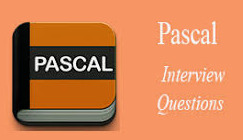
PASCAL Interview Questions 11. What does IP stand for? IP was never coined to be a particular acronym. Present definitions are Internet Pascal, Intellectual Property Pascal, InterPlatform Pascal. The name IP Pascal was chosen to represent the flavor of today's machine and process independent design processes. As some of you may know, I am heavily involved in the networking industry. Internet Protocol was originally envisioned as a way to "bridge" different networks together. The principle was that one carefully constructed standard would be able to bridge any number of different networks together, and the overhead of a second level protocol would only be incurred once. This is much like saying that designing one standard plug, then designing a series of adapters to that plug from other plug types, can unify incompatible systems. 12. Is IP Pascal new? No. IP Pascal originated in 1980. IP Pascal is used here in electronic integrated circuit CAD programs. IP Pascal was written as a core in assembly language, but the majority of the system rewritten in Pascal by 1985. In 1987, like many other developers, I moved to the IBM-PC and began using off the shelf standard ISO/ANSI compilers. By 1990, I started to have extensive problems with Pascal vendors not keeping up with changing technologies, and foresaw the fallout of many existing vendors from the market. At that time, I made a decision whether I would stay with my extensive code base in Pascal, or move to a more generally accepted language, most likely C. I decided that I would stay with Pascal, and take back control of our compiler as it was abandoned in 1987. That work was completed in 1995, in time for the advent of Windows 95. Since that year, the platform for IP has been extensively expanded. 13. What is the lifetime of IP Pascal? Unlike many commercial products, IP Pascal is not designed according to the "hit software" mentality. I use IP Pascal here, I am its first customer. Because of this, I won't be creating phone support for the product. IP Pascal will be supported by email, web site, and usenet forum without charges or restrictions. Emails will be typically answered within 48 hours. Because this support model does not require hiring large support staffs (and then firing them later as demand decreases), there is no plans to limit or charge for support. 14. Should standard Pascal be used without extentions? Recently, I have had some folks email me that they are surprised I am supporting advanced extentions for Pascal. Pascal always had extentions. The original compiler created by Niklaus Wirth had extentions specific to the CDC 6000 series computers. The idea of the standard was never to forbid extentions, but rather that the basic implementation be as standardized across processors and implementations as possible. In the old days of the mainframe and line printers, there was actually a chance that a program completely coded within the language standard would be all that was needed. Now, with advanced graphics and sound, and advanced devices like video editing, the general portable program is thought by many to be dead. I would say that nothing is further from the truth. We need clean and portable interfaces and programs more than ever. What has changed is that we rely more on library construction and interfaces. Windows, OS X and Linux/X Windows can be thought of as advanced intefaces with somewhat limited portability. Advanced graphics libraries such OpenGL are paving the way to new levels of functionality and portabilty. 15. What are the basic features of Pascal? Pascal is a structured language, using if-then-else, while, repeat-until, and for-to/downto control structures. It differs primarily from proceeding languages in that data structures were also included, with records (a feature borrowed from COBOL), arrays, files, sets and pointers. Pascal is also unusual for forging an effective compromise between language simplicity, power, and matching of language structures to underlying machine implementation. Pascal also has many features for compiler writers. The language is constructed to have a minimum of ambiguity. Pascal, with few exceptions, can be processed "forward" with all of the smaller elements (like constants, types, etc) being defined before they are used. Pascal requires the types and exact sizes of operands to be known before they are operated on, again leading to simplified language processing and efficient output code (although this feature has often been called a problem). For this reason, Pascal still remains a popular language to implement compilers for as part of a compiler science class. 16. Is Pascal designed to be a teaching language? This assertion has often been used to imply that Pascal is a toy language. I can't state the answer any better than Niklaus Wirth himself did: "Occasionally, it has been claimed that Pascal was designed as a language for teaching. Although this is correct, its use in teaching was not the only goal. In fact, I do not believe in using tools and formalisms in teaching that are inadequate for any practical task." - Niklaus Wirth, from the 1984 ACM A.M. Turing award lecture. 17. What are the differences between apple Pascal and the standard? Early Apple Pascal was based entirely on the UCSD system, and the same comments apply to it as to UCSD Pascal above. 18. How do I make EXE files with Turbo Pascal? In Turbo Pascal, in the compile menu, select COMPILE TO MEMORY. Open the menu again, and it should say COMPILE TO DISK. Then select COMPILE, and it will create the file XXX.EXE, where XXX is the name of your .PAS file. 19. Is it possible to 'decompile' pascal EXEs or TPUs? No. Too much information is lost in the compiling process. 20. How do I debug my Pascal programs? In any cases where your program is longer than a few hundred lines, you will need to be able to run it through a debugger. Pascal programs compiled with GPC can be debugged via the GNU debugger dbg which we have installed on our Sun Fire system. However, the debugger is designed for C-code, and is rather kloncky if used with Pascal. But it is the only debugger available that works with GPC. To be able to use the debuuger with your Pascal code, you have to include the -g option in your compilation. Since this option and optimization of the code (i.e. the -O options) are mutually exclusive, you will have to remove any -O directives from your compile command lines. Then you can start the debugger by typing "gdb name_of_executable". The debugger is operated by typing in commands such as run Start the program from the beginning stop Stop the program from executing break Insert a break at a given line of the code, or in a specific subroutine or function cont Continue from the present position in the code until the next break is encountered list List the code around the present break point print Show the value of a variable 21. What are the Borland Pascal Products In essence, Borland Pascal is the 'professional' product, whilst the Turbo Pascals are 'hobbyist' products. Current Versions are (excluding fixes): Borland Pascal 7 (Dos/Win/Prot) Turbo Pascal 7 (Dos) Turbo Pascal for Windows 1.5 (Win) There is an update to TP and BP to v7.01. This can be obtained by contacting Borland. These still have VER70 defined. Borland Pascal can do everything that both Turbo Pascals can do, plus: Compile for 16 bit DOS Protected mode (less memory constraints) Full Run Time Library Source code Lots of assorted debugging and programming tools 22. Is there a way to run my Pascal programs in parallel? There is indeed, but it's not going to be easy. One way of "parallelizing" your programs is to include "message passing" in the code. Different portions of the code are thereby executed by different processors, and information is shared by passing messages between the processors. The most widely used method to do this is called Message Passing Interface (MPI), and is available in the form of libraries on the SUN Fire muti-processor machines of HPCVL. However, MPI works only with FORTRAN and C directly. The libraries consist of subroutines that can be called from code written in those two languages. In order to write parallel code in Pascal, you therefore have to do the following things. Write your code in a "single code multiple data" manner by inserting calls to message-passing functions. The interface with these functions will have to be designed by you. Implement the message-passing functions in C and use the C-bindings of the MPI library inside of those functions. Compile your Pascal routines with GPC, and your C-routines with the native C-compiler to produce object code. Include the proper header files in the C functions via the "-I" option. Collect the C-functions in a library using the ar command. Link the object code with GPC, including the C-functions in the form of a library. MPI is linked in by specifying "-l", "-L", "-R", and "-I" options. 23. What is the Pascal compiler used on HPCVL machines? The Pascal compiler installed on the Sun Fire system of HPCVL is the Gnu Pascal Compiler (GPC). This is a public-domain compiler that has a great deal of extensions and compatibility features built into it, and is designed to be very portable. The versions are at present: GNU Pascal version 20000707, based on gcc-2.95.2 19991024 (for SUN Sun Fire). This compiler supports ISO-7185 Standard Pascal and ISO-10206 Extended Pascal, as well as Borland Pascal 7.0 and parts of Pascal-SC. For more detailed specifications which features are available, see the the language specification page of GPC. GPC is located in the /usr/local directory hierarchy. It makes use of some features of the Gnu C Compiler (GCC) and therefore needs access to libraries and header files from that distribution. Its close relationship with GCC also enables it (to some degree) to use the GNU debugger 24. How do I run gpc? This FAQ is not meant as a manual for the GNU Pascal Compiler. The usage of the compiler is very straightforward, though. The command gpc is used both for compiling and linking the programs. For linking, it will invoke the system-supplied ld feature with the appropriate switches and environment variables. To use GPC you have to have to have "/usr/local/bin" in your PATH. It might in some cases be necessary to set the system environment variable LD_LIBRARY_PATH to "/usr/local/lib:/usr/lib" in order for your executable to find the proper dynamic libraries at runtime. GPC uses command-line options to guide the compilation. These options are often very standard, such as -c to avoid linking and produce only object files, -O# to specify optimization levels, -o to specify the name of the output (executable of object) file. Almost all options are documented in HTML format. For a complete list, obtain the GNU Pascal Manual . There are no useful Unix man pages for this compiler. Because of its close relationship with the GNU C-compiler GCC, almost all of the options that are available for the latter are also part of the Pascal compiler command set. Another effect of this is that there is usually no problems with using C-routines in conjunction with the Pascal compiler. This comes in handy when you are trying to compile Pascal programs to run in parallel mode on a multi-processor system 25. Why Pascal? Pascal is a computer language that was designed for teaching purposes. It makes extensive use of function and subroutine calls and allows code do be written in a very "readable" manner. Pascal is one of the precursors of the arguably most successful programming language C. Many people learned programming with Pascal, and a good deal of code exists that was written in this language. In recent times, Pascal has been extended a great deal, and with those extensions, the language can compete with more modern programming languages such as C/C++ or Java. We provide a Pascal compiler to enable those of our users who have "legacy code" in Pascal, or want to use modern programming techniques without having to learn a new programming language. However, Pascal is not supported as such by Sun/Solaris or IBM/AIX, i.e. there is no native Pascal compiler for our systems. Instead we use a portable public-domain compiler. 26. Are there any freeware Pascal compilers? Certainly. One of the most recent and active is FPK Pascal, a 32 bit Turbo Pascal compatible compiler system for DOS and OS/2. Comes with full Pascal source, and compiles itself. The author intends to extend it to work under Linux too. Note that currently the documentation is in German only, 27. Why use the standard version of the language (when other dialects are more widely used)? ISO 7185 standard is the original language as created by N. Wirth, more precisely defined and more secure than the original. The standard makers refrained from making large improvements or extensions to the language. In fact, because Pascal is one of the most carefully designed languages and also one of the most carefully standardized, there is a high degree of ability to determine, unambiguously, if a given program construct is legal according to ISO 7185 rules. Pascal, almost from the first of its use, was widely extended and changed. One reason for this may be that the language was also very popular in compiler classes, and tended to produce many experimental versions. The original language, Pascal/1972 or J&W Pascal, has been around since 1972, standardized in 1982, and only minor changes were required to programs to bring them into compliance with it (see below). The basis of the language is still very strong, and the ISO 7185 standard is freely available. Further, there are many books written with the standard in mind. 28. What are the types of pointers used in Pascal? There are three types of pointers used in Pascal are: Record Pointer Associate Pointer Reference Pointer 29. Is there a Borland Pascal Mailing list? No, there is not. 30. What is the usage of Extension in Pascal? It is used to make the program portable and clean. 31. How to release the getmem function allocated memory? By using the freemem function. 32. What is Pascal’s TimeToString? It is a function in Pascal which is used to get the current time in a colon delimited form. 33. What are the different Pascal standards? he original Pascal standard was an unofficial standard documented by the author, Niklaus Wirth, in "The Report". The first official standard was ISO 7185 issued in 1983. This was followed by the extended standard, ISO 10206, in 1990. Another standard was the Object-Oriented Extension to Pascal. However, this standard was never finished, and was basically abandoned for lack of interest. 34. What is standard Pascal? Pascal is one of a series of languages put forth by one of the most prolific computer language creators, Niklaus Wirth, a professor at Institut fur informatik, ETH, Zurich, Switzerland. Professor Wirth participated in various versions of Algol, a language put forth by international cooperation that introduced the basic concepts of structured programming to the world. Wirth terms Pascal as a descendant of Algol 60 (for Algol, 1960 standard). The "official" descendant of Algol 60 was Algol 68, famous for having assignment as an expression operator (a basic feature of the later language C). Wirth felt that the design committee for Algol, after Algol 60, was losing focus and creating an unnecessarily complex language. While Algol W has had it's fans, the language Pascal was considered to be a new high of consistent language design. The first draft of Pascal was created in 1968. The first compiler was operational in 1970, and the language was generally published in 1971. In 1973, after two years of testing and use, the language was revised into it's final form. That was detailed by "The Pascal User Manual and Report". 35. What is Pascal Sets? Pascal Sets: It is a collection of elements of the same type. It allows defining the set data type. Here, the set elements are enclosed within square brackets. 36. Will Delphi32 do DOS programs as well as Windows? Delphi32 is for Windows 95 and Windows NT. It is not a DOS product. It will create 32-bit console mode apps, but it will not create DOS apps. 37. What is With Statement in Pascal? With Statement: This statement is used to access the members of a record. The With Statement is the alternative way of member access operator. 38. How to declare a variant type in Pascal? The syntax of declaring a variant type is: var v: variant; 39. What is the syntax to declare constants? Syntax to declare constants: const identifier = constant_value; 40. What is function in Pascal? It is a group of statements which is used to perform a task. It is defined by using the function keyword. 41. What is Pascal units? Modules referred as units in Pascal and Pascal consists many built in units also. Here, modules consists code blocks and code blocks consists of variables, type declarations and statement procedures etc. 42. What is IP Pascal? A. IP is an interplatform Pascal. It supports the following platforms in its current configuration: Windows/95/98/ME/NT/2000/XP. Linux/86. A port for Mac OS X is under way, and a port for Sun Solaris/Sparc is planned. IP both provides, and itself is run, on a set of porting modules that allow IP, and its client programs, to run on any of the supported platforms without source change. To move within operating systems on the same machine type, only a relink is required. To move within different CPU based systems, a recompile and link is required. 43. What are the major dialects of Pascal in use today? There have been many implementations of Pascal, both those that follow and those that don't follow the ISO 7185 standard. For the most part, ISO 7185 was followed on large computer installations during the early days of Pascal (1973-1990), and some installations on microcomputers. The other dialect that became popular was the UCSD (University of California at San Diego) Pascal, followed by Borland's Turbo Pascal. Although there are virtually no current implementations of UCSD Pascal, Borland's products exist today for advanced IBM-PC compatibles under Borland's Delphi name. When the IBM-PC became 32 bit with the introduction of the Intel 80386, virtually all of the 32 bit implementations of Pascal on the PC were ISO 7185 conforming. However, there was a large shakeout of compiler vendors in the early 1990's that removed many of these installations from the market. 44. What are the types of data types used in Pascal? Types of data types are: Integers Real Numbers Char Data Type Boolean Data Types 45. What are the Set Operations used in Pascal? The Set Operations used in Pascal are: In Union Inclusion Difference Intersection Symmetric difference 46. Why is the name pascal? Pascal was named after the French mathematician Blaise Pascal, who created a calculating machine (not a true computer). Pascal Programing Questions and Answers Pdf Download Read the full article
0 notes
Text
Choosing Own Design T-Shirts For virtually any Activities And Occasions
Are memorial service tee shirts good Christmas items? The answer without a darkness of a skepticism to help this question is indeed! The reason why funeral T-shirts help to make outstanding Christmas time gifts may be the heart and even creativity that goes into doing a obituary T Shirt. First of all when youre building a memorial t-shirt plus you the particular creativity into it, put the words that you wanted in order to say to the person youre getting the idea for, it may be something that they may find out you actually put efforts into getting made. In tshirtkings247. Com, we understand the importance of a carefully created message And precisely how it makes some sort of man or woman feel when they can certainly express the love these people come to feel for someone who also is died. For illustration we had some sort of buyer who lost her child in an unpredicted car accident. Little or nothing can at any time remove the damage, pain together with sorrow of which she thinks from losing your ex kid but for some explanation a T-shirt with the woman daughter’s pictures with powerful written text that says “you endure me” I can always appreciate you”, “you’re always in our heart” things like that ……when she wears her clothing with her daughter with it, your woman gets some sort of chance to express the girl love and see her kid. She’s not generally there in person but she is still taking a small piece of the girl using her. I lost my own sibling and I not too long ago gone to pick right up my son by Al and on long automobile rides I would constantly call up my brother and even we would chat regarding hours. I actually wore my memorial T T shirt, in order to symbolize him being with myself on this trip. Yes my own brother is here with me one way or another. Photography t-shirts are great gifts to get Christmas Items because they are fantastic remedy. Anytime you may give somebody therapy if its with Christmas, birthday or any various other day it’s always good thus of course it’s a good gift. one additional outstanding reason why photograph t shirts are great Xmas gifts is due to affordability. Anyone can get a picture T shirts for $15 and even you could easily get a loved ones of six most t shirts for under $100. Lets us say that the grandma in a family passed apart, you can give the shirts to everybody within the family members a gift that individuals will not throw away folks won’t lose, people will notr get fed up with them together with set them down in the corner. These will likely be life long treasures. Photo Tee shirts, Memorial t-shirts rest throughout peace t-shirts are an outstanding gift for Christmas this coming year and My partner and i hope that you can consider the place who creates the industrys best funeral service T-shirts since you’re variety one option to visit. Exactly how To Choose A Work Bordo The Propper Snag-Free Attrazione stands up to help anything you put that through. Innovative wicking fabric keeps you cool, dry out and comfortable to help you maintain a professional visual appeal. Propper International Supplied by Propper International Oftentimes some sort of button-down, pin-tucked patrol even isn’t the right option for the day. Maybe you’re working popular weather duty at the state fair, training with the range, or just need to dress down somewhat but still look sharp. The uniform should create you present well. Crisp, clean, reliable. And it needs for you to work with everything to need it. What selections are you experiencing? One great substitute a large amount of departments are really moving towards is the particular duty polo. Crisper when compared with the typical off-the-shelf punta you’ll find at the retail store, a duty bordo offers many associated with the same functions involving a uniform shirt yet in a relaxed however professional fit that allows you move in addition to continues you cooler through all those hot weather activities. What exactly should you look for when choosing a bordo that works best to get you? Propper's I. C. E. Functionality Polo is available for men and even women police officers in short and extended fleshlight sleeves as well as AMERICAN NATIONAL STANDARDS INSTITUTE III reflective. Propper's I actually. C. E. Overall performance Punta is obtainable for men together with women regulation enforcement officials in short and very long covers as well like ANSI III reflective. Propper International Features Off-the-shelf polos are certainly not created for the particular exclusive needs associated with legislation observance. They may end up being just the thing for golf outings or perhaps laid-back day at this office, but if you’re like most officers, a large portion of your day is used aside from the station and not over a golf training course. You need a good punta that fits the troubles within your daily routine. Very good duty polos have some of the same efficient characteristics as your button-down patrol tshirt, such like pen channels around the adjustable rate mortgage, reinforced microphone video poker machines in the shoulders, and some sort of sunglass/bodycam loop on the front. Product Polo climate is summer and you’ll be excessive sweating – a good lot. So , the punta should be humidity wicking to keep you interesting and dry. Moisture-wicking fabrics pull sweat away coming from skin and enable that in order to evaporate, leaving you cooler including your shirt free of cost of unsightly perspire signifies. While cotton might seem chillier because it tends to be able to be light-weight, synthetic components such as cotton together with poly/cotton blends are much much better than natural fibers only at wicking moisture considering that the synthetic fiber spreads often the moisture across a broader area, exposing it for you to more sunlight and consequently far better evaporation. Synthetic components also tend to maintain their appearance longer more than continuous put on and washings, keeping clothing looking a great deal more professional as they’re worn out over time. Longer lasting equals less spending on fresh shirts. To reduce the fact that dreaded on-duty stink, search for tops with antimicrobial fiber or treatment. Sweating doesn’t stink on their own, although when the idea combines with bacteria and even other components outside the body, that’s when you start in order to smell not so fantastic. Collar The first thing people sees on your current polo will be the collar since it’s appropriate beneath your own face. The idea must seem good. A good patrol polo collar should rest without problems with no upturned corners plus accommodate a good badge owner chain underneath. Ordinarily, the particular collar tab stay put through either stiff stays made in to the collar or some sort of individually distinct button underneath every single hook to prevent blowing in the wind flow. Longevity From patrol activities in order to special assignments, duty polos are often worn inside severe environments. They include to experience various situations, which include put on under as well as over body battle suits. Typically the materials needs to endure against all these problems. Look at how well often the material resists snags. To get instance, what happens in case you accidentally rub the catch side of the catch and loop seal associated with your armor against the particular human body or sleeve involving the fundamento? Does it snag or take? Just what if you bump way up against a brick wall membrane youre using for deal with? How about laundering? Does the particular material supplement up immediately after repeated flushes? Length Just simply like your more basic patrol uniform jacket, your polo needs to stay tucked for two causes: it appears to be more professional and you are going to likely wear a obligation belt with it. Dedicated patrol polos usually are generally more, so they will stay tucked more readily, preventing the awkward together with most likely hazardous need to re-tuck your shirt just for the reason that you stood or sitting low. Whatever duty project a person work, make guaranteed the polo anyone have on is the polo you may need.
0 notes
Link
Portfolio versus resume Having emerged from engineering and mathematics, computer science programs take a resume-based approach to hiring off their graduates. A resume says nothing of a programmer's ability. Every computer science major should build a portfolio. A portfolio could be as simple as a personal blog, with a post for each project or accomplishment. A better portfolio would include per-project pages, and publicly browsable code (hosted perhaps on github or Google code). Contributions to open source should be linked and documented. A code portfolio allows employers to directly judge ability. GPAs and resumes do not. Professors should design course projects to impress on portfolios, and students, at the conclusion of each course, should take time to update them. Examples Technical communication Lone wolves in computer science are an endangered species. Modern computer scientists must practice persuasively and clearly communicating their ideas to non-programmers. In smaller companies, whether or not a programmer can communicate her ideas to management may make the difference between the company's success and failure. Unfortunately, this is not something fixed with the addition of a single class (although a solid course in technical communication doesn't hurt). More classes need to provide students the opportunity to present their work and defend their ideas with oral presentations. Specific recommendations I would recommend that students master a presentation tool like PowerPoint or (my favorite) Keynote. (Sorry, as much as I love them, LaTeX-based presentation tools are just too static.) For producing beautiful mathematical documentation, LaTeX has no equal. All written assignments in technical courses should be submitted in LaTeX. Recommended reading An engineering core Computer science is not quite engineering. But, it's close enough. Computer scientists will find themselves working with engineers. Computer scientists and traditional engineers need to speak the same language--a language rooted in real analysis, linear algebra, probability and physics. Computer scientists ought to take physics through electromagnetism. But, to do that, they'll need take up through multivariate calculus, (and differential equations for good measure). In constructing sound simulations, a command of probability and (often times) linear algebra is invaluable. In interpreting results, there is no substitute for a solid understanding of statistics. Recommended reading The Unix philosophy Computer scientists should be comfortable with and practiced in the Unix philosophy of computing. The Unix philosophy (as opposed to Unix itself) is one that emphasizes linguistic abstraction and composition in order to effect computation. In practice, this means becoming comfortable with the notion of command-line computing, text-file configuration and IDE-less software development. Specific recommendations Given the prevalence of Unix systems, computer scientists today should be fluent in basic Unix, including the ability to: navigate and manipulate the filesystem; compose processes with pipes; comfortably edit a file with emacs and vim; create, modify and execute a Makefile for a software project; write simple shell scripts. Students will reject the Unix philosophy unless they understand its power. Thus, it's best to challenge students to complete useful tasks for which Unix has a comparative advantage, such as: Find the five folders in a given directory consuming the most space. Report duplicate MP3s (by file contents, not file name) on a computer. Take a list of names whose first and last names have been lower-cased, and properly recapitalize them. Find all words in English that have x as their second letter, and n as their second-to-last. Directly route your microphone input over the network to another computer's speaker. Replace all spaces in a filename with underscore for a given directory. Report the last ten errant accesses to the web server coming from a specific IP address. Recommended reading Systems administration Some computer scientists sneer at systems administration as an "IT" task. The thinking is that a computer scientist can teach herself how to do anything a technician can do. This is true. (In theory.) Yet this attitude is misguided: computer scientists must be able to competently and securely administer their own systems and networks. Many tasks in software development are most efficiently executed without passing through a systems administrator. Specific recommendations Every modern computer scientist should be able to: Install and administer a Linux distribution. Configure and compile the Linux kernel. Troubleshoot a connection with dig, ping and traceroute. Compile and configure a web server like apache. Compile and configure a DNS daemon like bind. Maintain a web site with a text editor. Cut and crimp a network cable. Recommended reading Programming languages Programming languages rise and fall with the solar cycle. A programmer's career should not. While it is important to teach languages relevant to employers, it is equally important that students learn how to teach themselves new languages. The best way to learn how to learn progamming languages is to learn multiple programming languages and programming paradigms. The difficulty of learning the nth language is half the difficulty of the (n-1)th. Yet, to truly understand programming languages, one must implement one. Ideally, every computer science major would take a compilers class. At a minimum, every computer science major should implement an interpreter. Specific languages The following languages provide a reasonable mixture of paradigms and practical applications: Racket; C; JavaScript; Squeak; Java; Standard ML; Prolog; Scala; Haskell; C++; and Assembly. Racket Racket, as a full-featured dialect of Lisp, has an aggressively simple syntax. For a small fraction of students, this syntax is an impediment. To be blunt, if these students have a fundamental mental barrier to accepting an alien syntactic regime even temporarily, they lack the mental dexterity to survive a career in computer science. Racket's powerful macro system and facilities for higher-order programming thoroughly erase the line between data and code. If taught correctly, Lisp liberates. Recommended reading ANSI C C is a terse and unforgiving abstraction of silicon. C remains without rival in programming embedded systems. Learning C imparts a deep understanding of the dominant von Neumann architecture in a way that no other language can. Given the intimate role poor C programming plays in the prevalence of the buffer overflow security vulnerabilities, it is critical that programmers learn how to program C properly. Recommended reading ANSI C by Kernighan and Ritchie. JavaScript JavaScript is a good representative of the semantic model popular in dynamic, higher-order languages such as Python, Ruby and Perl. As the native language of the web, its pragmatic advantages are unique. Recommended reading Squeak Squeak is a modern dialect of Smalltalk, purest of object-oriented languages. It imparts the essence of "object-oriented." Recommended reading Java Java will remain popular for too long to ignore it. Recommended reading Standard ML Standard ML is a clean embodiment of the Hindley-Milner system. The Hindley-Milner type system is one of the greatest (yet least-known) achievements in modern computing. Though exponential in complexity, type inference in Hindley-Milner is always fast for programs of human interest. The type system is rich enough to allow the expression of complex structural invariants. It is so rich, in fact, that well-typed programs are often bug-free. Recommended reading Prolog Though niche in application, logic programming is an alternate paradigm for computational thinking. It's worth understanding logic programming for those instances where a programmer may need to emulate it within another paradigm. Another logic language worth learning is miniKanren. miniKanren stresses pure (cut not allowed) logic programming. This constraint has evolved an alternate style of logic programming called relational programming, and it grants properties not typically enjoyed by Prolog programs. Recommended reading Scala Scala is a well-designed fusion of functional and object-oriented programming languages. Scala is what Java should have been. Built atop the Java Virtual Machine, it is compatible with existing Java codebases, and as such, it stands out as the most likely successor to Java. Recommended reading Haskell Haskell is the crown jewel of the Hindley-Milner family of languages. Fully exploiting laziness, Haskell comes closest to programming in pure mathematics of any major programming language. Recommended reading ISO C++ C++ is a necessary evil. But, since it must be taught, it must be taught in full. In particular, computer science majors should leave with a grasp of even template meta-programming. Recommended reading Assembly Any assembly language will do. Since x86 is popular, it might as well be that. Learning compilers is the best way to learn assembly, since it gives the computer scientist an intuitive sense of how high-level code will be transformed. Specific recommendations Computer scientists should understand generative programming (macros); lexical (and dynamic) scope; closures; continuations; higher-order functions; dynamic dispatch; subtyping; modules and functors; and monads as semantic concepts distinct from any specific syntax. Recommended reading Discrete mathematics Computer scientists must have a solid grasp of formal logic and of proof. Proof by algebraic manipulation and by natural deduction engages the reasoning common to routine programming tasks. Proof by induction engages the reasoning used in the construction of recursive functions. Computer scientists must be fluent in formal mathematical notation, and in reasoning rigorously about the basic discrete structures: sets, tuples, sequences, functions and power sets. Specific recommendations For computer scientists, it's important to cover reasoning about: trees; graphs; formal languages; and automata. Students should learn enough number theory to study and implement common cryptographic protocols. Recommended reading Data structures and algorithms Students should certainly see the common (or rare yet unreasonably effective) data structures and algorithms. But, more important than knowing a specific algorithm or data structure (which is usually easy enough to look up), computer scientists must understand how to design algorithms (e.g., greedy, dynamic strategies) and how to span the gap between an algorithm in the ideal and the nitty-gritty of its implementation. Specific recommendations At a minimum, computer scientists seeking stable long-run employment should know all of the following: hash tables; linked lists; trees; binary search trees; and directed and undirected graphs. Computer scientists should be ready to implement or extend an algorithm that operates on these data structures, including the ability to search for an element, to add an element and to remove an element. For completeness, computer scientists should know both the imperative and functional versions of each algorithm. Recommended reading Theory A grasp of theory is a prerequisite to research in graduate school. Theory is invaluable when it provides hard boundaries on a problem (or when it provides a means of circumventing what initially appear to be hard boundaries). Computational complexity can legitimately claim to be one of the few truly predictive theories in all of computer "science." A computer scientist must know where the boundaries of tractability and computability lie. To ignore these limits invites frustration in the best case, and failure in the worst. Specific recommendations At the undergraduate level, theory should cover at least models of computation and computational complexity. Models of computation should cover finite-state automata, regular languages (and regular expressions), pushdown automata, context-free languages, formal grammars, Turing machines, the lambda calculus, and undecidability. At the undergraduate level, students should learn at least enough complexity to understand the difference between P, NP, NP-Hard and NP-Complete. To avoid leaving the wrong impression, students should solve a few large problems in NP by reduction to SAT and the use of modern SAT solvers. Recommended reading Architecture There is no substitute for a solid understanding of computer architecture. Computer scientists should understand a computer from the transistors up. The understanding of architecture should encompass the standard levels of abstraction: transistors, gates, adders, muxes, flip flops, ALUs, control units, caches and RAM. An understanding of the GPU model of high-performance computing will be important for the foreseeable future. Specific recommendations A good understanding of caches, buses and hardware memory management is essential to achieving good performance on modern systems. To get a good grasp of machine architecture, students should design and simulate a small CPU. Recommended reading Operating systems Any sufficiently large program eventually becomes an operating system. As such, computer scientists should be aware of how kernels handle system calls, paging, scheduling, context-switching, filesystems and internal resource management. A good understanding of operating systems is secondary only to an understanding of compilers and architecture for achieving performance. Understanding operating systems (which I would interpret liberally to include runtime systems) becomes especially important when programming an embedded system without one. Specific recommendations It's important for students to get their hands dirty on a real operating system. With Linux and virtualization, this is easier than ever before. To get a better understanding of the kernel, students could: print "hello world" during the boot process; design their own scheduler; modify the page-handling policy; and create their own filesystem. Recommended reading Networking Given the ubiquity of networks, computer scientists should have a firm understanding of the network stack and routing protocols within a network. The mechanics of building an efficient, reliable transmission protocol (like TCP) on top of an unreliable transmission protocol (like IP) should not be magic to a computer scientist. It should be core knowledge. Computer scientists must understand the trade-offs involved in protocol design--for example, when to choose TCP and when to choose UDP. (Programmers need to understand the larger social implications for congestion should they use UDP at large scales as well.) Specific recommendations Given the frequency with which the modern programmer encounters network programming, it's helpful to know the protocols for existing standards, such as: 802.3 and 802.11; IPv4 and IPv6; and DNS, SMTP and HTTP. Computer scientists should understand exponential back off in packet collision resolution and the additive-increase multiplicative-decrease mechanism involved in congestion control. Every computer scientist should implement the following: an HTTP client and daemon; a DNS resolver and server; and a command-line SMTP mailer. No student should ever pass an intro neworking class without sniffing their instructor's Google query off wireshark. It's probably going too far to require all students to implement a reliable transmission protocol from scratch atop IP, but I can say that it was a personally transformative experience for me as a student. Recommended reading Security The sad truth of security is that the majority of security vulnerabilities come from sloppy programming. The sadder truth is that many schools do a poor job of training programmers to secure their code. Computer scientists must be aware of the means by which a program can be compromised. They need to develop a sense of defensive programming--a mind for thinking about how their own code might be attacked. Security is the kind of training that is best distributed throughout the entire curriculum: each discipline should warn students of its native vulnerabilities. Specific recommendations At a minimum, every computer scientist needs to understand: social engineering; buffer overflows; integer overflow; code injection vulnerabilities; race conditions; and privilege confusion. A few readers have pointed out that computer scientists also need to be aware of basic IT security measures, such how to choose legitimately good passwords and how to properly configure a firewall with iptables. Recommended reading Cryptography Cryptography is what makes much of our digital lives possible. Computer scientists should understand and be able to implement the following concepts, as well as the common pitfalls in doing so: symmetric-key cryptosystems; public-key cryptosystems; secure hash functions; challenge-response authentication; digital signature algorithms; and threshold cryptosystems. Since it's a common fault in implementations of cryptosystems, every computer scientist should know how to acquire a sufficiently random number for the task at hand. At the very least, as nearly every data breach has shown, computer scientists need to know how to salt and hash passwords for storage. Specific recommendations Every computer scientist should have the pleasure of breaking ciphertext using pre-modern cryptosystems with hand-rolled statistical tools. RSA is easy enough to implement that everyone should do it. Every student should create their own digital certificate and set up https in apache. (It's surprisingly arduous to do this.) Student should also write a console web client that connects over SSL. As strictly practical matters, computer scientists should know how to use GPG; how to use public-key authentication for ssh; and how to encrypt a directory or a hard disk. Recommended reading Software testing Software testing must be distributed throughout the entire curriculum. A course on software engineering can cover the basic styles of testing, but there's no substitute for practicing the art. Students should be graded on the test cases they turn in. I use test cases turned in by students against all other students. Students don't seem to care much about developing defensive test cases, but they unleash hell when it comes to sandbagging their classmates. User experience design Programmers too often write software for other programmers, or worse, for themselves. User interface design (or more broadly, user experience design) might be the most underappreciated aspect of computer science. There's a misconception, even among professors, that user experience is a "soft" skill that can't be taught. In reality, modern user experience design is anchored in empirically-wrought principles from human factors engineering and industrial design. If nothing else, computer scientists should know that interfaces need to make the ease of executing any task proportional to the frequency of the task multiplied by its importance. As a practicality, every programmer should be comfortable with designing usable web interfaces in HTML, CSS and JavaScript. Recommended reading Visualization Good visualization is about rendering data in such a fashion that humans perceive it as information. This is not an easy thing to do. The modern world is a sea of data, and exploiting the local maxima of human perception is key to making sense of it. Recommended reading Parallelism Parallelism is back, and uglier than ever. The unfortunate truth is that harnessing parallelism requires deep knowledge of architecture: multicore, caches, buses, GPUs, etc. And, practice. Lots of practice. Specific recommendations It is not at all clear what the "final" answer on parallel programming is, but a few domain-specific solutions have emerged. For now, students should learn CUDA and OpenCL. Threads are a flimsy abstraction for parallelism, particularly when caches and cache coherency are involved. But, threads are popular and tricky, so worth learning. Pthreads is a reasonably portable threads library to learn. For anyone interested in large-scale parallelism, MPI is a prerequisite. On the principles side, it does seem that map-reduce is enduring. Software engineering The principles in software engineering change about as fast as the programming languages do. A good, hands-on course in the practice of team software construction provides a working knowledge of the pitfalls inherent in the endeavor. It's been recommended by several readers that students break up into teams of three, with the role of leader rotating through three different projects. Learning how to attack and maneuver through a large existing codebase is a skill most programmers will have to master, and it's one best learned in school instead of on the job. Specific recommendations All students need to understand centralized version control systems like svn and distributed version control systems like git. A working knowlege of debugging tools like gdb and valgrind goes a long way when they finally become necessary. Recommended reading Formal methods As the demands on secure, reliable software increase, formal methods may one day end up as the only means for delivering it. At present, formal modeling and verification of software remains challenging, but progress in the field is steady: it gets easier every year. There may even come a day within the lifetime of today's computer science majors where formal software construction is an expected skill. Every computer scientist should be at least moderately comfortable using one theorem prover. (I don't think it matters which one.) Learning to use a theorem prover immediately impacts coding style. For example, one feels instinctively allergic to writing a match or switch statement that doesn't cover all possibilities. And, when writing recursive functions, users of theorem provers have a strong urge to eliminate ill-foundedness. Recommended reading Graphics and simulation There is no discipline more dominated by "clever" than graphics. The field is driven toward, even defined by, the "good enough." As such, there is no better way to teach clever programming or a solid appreciation of optimizing effort than graphics and simulation. Over half of the coding hacks I've learned came from my study of graphics. Specific recommendations Simple ray tracers can be constructed in under 100 lines of code. It's good mental hygiene to work out the transformations necessary to perform a perspective 3D projection in a wireframe 3D engine. Data structures like BSP trees and algorithms like z-buffer rendering are great examples of clever design. In graphics and simulation, there are many more. Recommended reading Robotics Robotics may be one of the most engaging ways to teach introductory programming. Moreover, as the cost of robotics continues to fall, thresholds are being passed which will enable a personal robotics revolution. For those that can program, unimaginable degrees of personal physical automation are on the horizon. Related posts Artificial intelligence If for no other reason than its outsized impact on the early history of computing, computer scientists should study artificial intelligence. While the original dream of intelligent machines seems far off, artificial intelligence spurred a number of practical fields, such as machine learning, data mining and natural language processing. Recommended reading Machine learning Aside from its outstanding technical merits, the sheer number of job openings for "relevance engineer," indicates that every computer scientist should grasp the fundamentals of machine learning. Machine learning doubly emphasizes the need for an understanding of probability and statistics. Specific recommendations At the undergraduate level, core concepts should include Bayesian networks, clustering and decision-tree learning. Recommended reading Databases Databases are too common and too useful to ignore. It's useful to understand the fundamental data structures and algorithms that power a database engine, since programmers often enough reimplement a database system within a larger software system. Relational algebra and relational calculus stand out as exceptional success stories in sub-Turing models of computation. Unlike UML modeling, ER modeling seems to be a reasonable mechanism for visualing encoding the design of and constraints upon a software artifact. Specific recommendations A computer scientist that can set up and operate a LAMP stack is one good idea and a lot of hard work away from running their own company. Recommended reading Non-specific reading recommendations What else? My suggestions are limited by blind spots in my own knowledge. What have I not listed here that should be included? Related posts
0 notes
Text
Assignment 1: ANSI and xterm.js
This week our assignment was to use the javascript libraries xtermjs/ANSI to make a text-based work on the grid. I was inspired by the Allison George article about the cave paintings and started thinking about 'primitive' language. And that got me thinking about the protein synthesis process as a primitive language of life. It abides by simple rules: a pairs with u and g pairs with c. In a strand of DNA that's preparing for translation and transcription, you essentially analyze the strand by looking at the individual nucleotides as a set of three, referred to as a codon. A sample strand can look like this
uuauugcuucuccuacug
but it will mean nothing unless you have the start codon 'aug' or Methianine. That's the easiest way to know when to actually start transcribing. In addition to a start codon, there are stop codons (uaa, uag, uga) that signify that transcription is over and it's ready to get packaged and sent off around the body.
The goal for my sketch was to be able to create an mRNA strand. Since transcription only happens if you see the start codon, I have the start codon under the setup function. From there on out, everything is random. The code then picks a random codon from the codon list. However, if it detects the stop codons, the program will stop running and print 'stop' in the console. The stop codon itself won't be displayed because it doesn't actually stand for a stop protein. If I had more time, I would have liked to have the nucleotides mapped to specific colors but I had a difficult time understanding how to do that within the ANSI library. I tried doing something like this
let nucleotides = { "a":"red", "u":"blue", "c":"green", "g":"yellow" }
and tried to match every character in the codon array to the key in nucleotides and pick the color based on that but I couldn't figure out how to do that with ansi.format().
live sketch
0 notes
Text
Ever wonder about that mysterious Content-Type tag? You know, the one you’re supposed to put in HTML and you never quite know what it should be?
Did you ever get an email from your friends in Bulgaria with the subject line “???? ?????? ??? ????”?
I’ve been dismayed to discover just how many software developers aren’t really completely up to speed on the mysterious world of character sets, encodings, Unicode, all that stuff. A couple of years ago, a beta tester for FogBUGZ was wondering whether it could handle incoming email in Japanese. Japanese? They have email in Japanese? I had no idea. When I looked closely at the commercial ActiveX control we were using to parse MIME email messages, we discovered it was doing exactly the wrong thing with character sets, so we actually had to write heroic code to undo the wrong conversion it had done and redo it correctly. When I looked into another commercial library, it, too, had a completely broken character code implementation. I corresponded with the developer of that package and he sort of thought they “couldn’t do anything about it.” Like many programmers, he just wished it would all blow over somehow.
But it won’t. When I discovered that the popular web development tool PHP has almost complete ignorance of character encoding issues, blithely using 8 bits for characters, making it darn near impossible to develop good international web applications, I thought, enough is enough.
So I have an announcement to make: if you are a programmer working in 2003 and you don’t know the basics of characters, character sets, encodings, and Unicode, and I catch you, I’m going to punish you by making you peel onions for 6 months in a submarine. I swear I will.
And one more thing:
IT’S NOT THAT HARD.
In this article I’ll fill you in on exactly what every working programmershould know. All that stuff about “plain text = ascii = characters are 8 bits” is not only wrong, it’s hopelessly wrong, and if you’re still programming that way, you’re not much better than a medical doctor who doesn’t believe in germs. Please do not write another line of code until you finish reading this article.
Before I get started, I should warn you that if you are one of those rare people who knows about internationalization, you are going to find my entire discussion a little bit oversimplified. I’m really just trying to set a minimum bar here so that everyone can understand what’s going on and can write code that has a hope of working with text in any language other than the subset of English that doesn’t include words with accents. And I should warn you that character handling is only a tiny portion of what it takes to create software that works internationally, but I can only write about one thing at a time so today it’s character sets.
A Historical Perspective
The easiest way to understand this stuff is to go chronologically.
You probably think I’m going to talk about very old character sets like EBCDIC here. Well, I won’t. EBCDIC is not relevant to your life. We don’t have to go that far back in time.
Back in the semi-olden days, when Unix was being invented and K&R were writing The C Programming Language, everything was very simple. EBCDIC was on its way out. The only characters that mattered were good old unaccented English letters, and we had a code for them called ASCII which was able to represent every character using a number between 32 and 127. Space was 32, the letter “A” was 65, etc. This could conveniently be stored in 7 bits. Most computers in those days were using 8-bit bytes, so not only could you store every possible ASCII character, but you had a whole bit to spare, which, if you were wicked, you could use for your own devious purposes: the dim bulbs at WordStar actually turned on the high bit to indicate the last letter in a word, condemning WordStar to English text only. Codes below 32 were called unprintable and were used for cussing. Just kidding. They were used for control characters, like 7 which made your computer beep and 12 which caused the current page of paper to go flying out of the printer and a new one to be fed in.
And all was good, assuming you were an English speaker.
Because bytes have room for up to eight bits, lots of people got to thinking, “gosh, we can use the codes 128-255 for our own purposes.” The trouble was, lots of people had this idea at the same time, and they had their own ideas of what should go where in the space from 128 to 255. The IBM-PC had something that came to be known as the OEM character set which provided some accented characters for European languages and a bunch of line drawing characters… horizontal bars, vertical bars, horizontal bars with little dingle-dangles dangling off the right side, etc., and you could use these line drawing characters to make spiffy boxes and lines on the screen, which you can still see running on the 8088 computer at your dry cleaners’. In fact as soon as people started buying PCs outside of America all kinds of different OEM character sets were dreamed up, which all used the top 128 characters for their own purposes. For example on some PCs the character code 130 would display as é, but on computers sold in Israel it was the Hebrew letter Gimel (), so when Americans would send their résumés to Israel they would arrive as rsums. In many cases, such as Russian, there were lots of different ideas of what to do with the upper-128 characters, so you couldn’t even reliably interchange Russian documents.
Eventually this OEM free-for-all got codified in the ANSI standard. In the ANSI standard, everybody agreed on what to do below 128, which was pretty much the same as ASCII, but there were lots of different ways to handle the characters from 128 and on up, depending on where you lived. These different systems were called code pages. So for example in Israel DOS used a code page called 862, while Greek users used 737. They were the same below 128 but different from 128 up, where all the funny letters resided. The national versions of MS-DOS had dozens of these code pages, handling everything from English to Icelandic and they even had a few “multilingual” code pages that could do Esperanto and Galician on the same computer! Wow! But getting, say, Hebrew and Greek on the same computer was a complete impossibility unless you wrote your own custom program that displayed everything using bitmapped graphics, because Hebrew and Greek required different code pages with different interpretations of the high numbers.
Meanwhile, in Asia, even more crazy things were going on to take into account the fact that Asian alphabets have thousands of letters, which were never going to fit into 8 bits. This was usually solved by the messy system called DBCS, the “double byte character set” in which someletters were stored in one byte and others took two. It was easy to move forward in a string, but dang near impossible to move backwards. Programmers were encouraged not to use s++ and s– to move backwards and forwards, but instead to call functions such as Windows’ AnsiNext and AnsiPrev which knew how to deal with the whole mess.
But still, most people just pretended that a byte was a character and a character was 8 bits and as long as you never moved a string from one computer to another, or spoke more than one language, it would sort of always work. But of course, as soon as the Internet happened, it became quite commonplace to move strings from one computer to another, and the whole mess came tumbling down. Luckily, Unicode had been invented.
Unicode
Unicode was a brave effort to create a single character set that included every reasonable writing system on the planet and some make-believe ones like Klingon, too. Some people are under the misconception that Unicode is simply a 16-bit code where each character takes 16 bits and therefore there are 65,536 possible characters. This is not, actually, correct. It is the single most common myth about Unicode, so if you thought that, don’t feel bad.
In fact, Unicode has a different way of thinking about characters, and you have to understand the Unicode way of thinking of things or nothing will make sense.
Until now, we’ve assumed that a letter maps to some bits which you can store on disk or in memory:
A -> 0100 0001
In Unicode, a letter maps to something called a code point which is still just a theoretical concept. How that code point is represented in memory or on disk is a whole nuther story.
In Unicode, the letter A is a platonic ideal. It’s just floating in heaven:
A
This platonic A is different than B, and different from a, but the same as A and A and A. The idea that A in a Times New Roman font is the same character as the A in a Helvetica font, but different from “a” in lower case, does not seem very controversial, but in some languages just figuring out what a letter is can cause controversy. Is the German letter ß a real letter or just a fancy way of writing ss? If a letter’s shape changes at the end of the word, is that a different letter? Hebrew says yes, Arabic says no. Anyway, the smart people at the Unicode consortium have been figuring this out for the last decade or so, accompanied by a great deal of highly political debate, and you don’t have to worry about it. They’ve figured it all out already.
Every platonic letter in every alphabet is assigned a magic number by the Unicode consortium which is written like this: U+0639. This magic number is called a code point. The U+ means “Unicode” and the numbers are hexadecimal. U+0639 is the Arabic letter Ain. The English letter A would be U+0041. You can find them all using the charmaputility on Windows 2000/XP or visiting the Unicode web site.
There is no real limit on the number of letters that Unicode can define and in fact they have gone beyond 65,536 so not every unicode letter can really be squeezed into two bytes, but that was a myth anyway.
OK, so say we have a string:
Hello
which, in Unicode, corresponds to these five code points:
U+0048 U+0065 U+006C U+006C U+006F.
Just a bunch of code points. Numbers, really. We haven’t yet said anything about how to store this in memory or represent it in an email message.
Encodings
That’s where encodings come in.
The earliest idea for Unicode encoding, which led to the myth about the two bytes, was, hey, let’s just store those numbers in two bytes each. So Hello becomes
00 48 00 65 00 6C 00 6C 00 6F
Right? Not so fast! Couldn’t it also be:
48 00 65 00 6C 00 6C 00 6F 00 ?
Well, technically, yes, I do believe it could, and, in fact, early implementors wanted to be able to store their Unicode code points in high-endian or low-endian mode, whichever their particular CPU was fastest at, and lo, it was evening and it was morning and there were already two ways to store Unicode. So the people were forced to come up with the bizarre convention of storing a FE FF at the beginning of every Unicode string; this is called a Unicode Byte Order Mark and if you are swapping your high and low bytes it will look like a FF FE and the person reading your string will know that they have to swap every other byte. Phew. Not every Unicode string in the wild has a byte order mark at the beginning.
For a while it seemed like that might be good enough, but programmers were complaining. “Look at all those zeros!” they said, since they were Americans and they were looking at English text which rarely used code points above U+00FF. Also they were liberal hippies in California who wanted to conserve (sneer). If they were Texans they wouldn’t have minded guzzling twice the number of bytes. But those Californian wimps couldn’t bear the idea of doubling the amount of storage it took for strings, and anyway, there were already all these doggone documents out there using various ANSI and DBCS character sets and who’s going to convert them all? Moi? For this reason alone most people decided to ignore Unicode for several years and in the meantime things got worse.
Thus was invented the brilliant concept of UTF-8. UTF-8 was another system for storing your string of Unicode code points, those magic U+ numbers, in memory using 8 bit bytes. In UTF-8, every code point from 0-127 is stored in a single byte. Only code points 128 and above are stored using 2, 3, in fact, up to 6 bytes.
This has the neat side effect that English text looks exactly the same in UTF-8 as it did in ASCII, so Americans don’t even notice anything wrong. Only the rest of the world has to jump through hoops. Specifically, Hello, which was U+0048 U+0065 U+006C U+006C U+006F, will be stored as 48 65 6C 6C 6F, which, behold! is the same as it was stored in ASCII, and ANSI, and every OEM character set on the planet. Now, if you are so bold as to use accented letters or Greek letters or Klingon letters, you’ll have to use several bytes to store a single code point, but the Americans will never notice. (UTF-8 also has the nice property that ignorant old string-processing code that wants to use a single 0 byte as the null-terminator will not truncate strings).
So far I’ve told you three ways of encoding Unicode. The traditional store-it-in-two-byte methods are called UCS-2 (because it has two bytes) or UTF-16 (because it has 16 bits), and you still have to figure out if it’s high-endian UCS-2 or low-endian UCS-2. And there’s the popular new UTF-8 standard which has the nice property of also working respectably if you have the happy coincidence of English text and braindead programs that are completely unaware that there is anything other than ASCII.
There are actually a bunch of other ways of encoding Unicode. There’s something called UTF-7, which is a lot like UTF-8 but guarantees that the high bit will always be zero, so that if you have to pass Unicode through some kind of draconian police-state email system that thinks 7 bits are quite enough, thank you it can still squeeze through unscathed. There’s UCS-4, which stores each code point in 4 bytes, which has the nice property that every single code point can be stored in the same number of bytes, but, golly, even the Texans wouldn’t be so bold as to waste that much memory.
And in fact now that you’re thinking of things in terms of platonic ideal letters which are represented by Unicode code points, those unicode code points can be encoded in any old-school encoding scheme, too! For example, you could encode the Unicode string for Hello (U+0048 U+0065 U+006C U+006C U+006F) in ASCII, or the old OEM Greek Encoding, or the Hebrew ANSI Encoding, or any of several hundred encodings that have been invented so far, with one catch: some of the letters might not show up! If there’s no equivalent for the Unicode code point you’re trying to represent in the encoding you’re trying to represent it in, you usually get a little question mark: ? or, if you’re reallygood, a box. Which did you get? -> �
There are hundreds of traditional encodings which can only store somecode points correctly and change all the other code points into question marks. Some popular encodings of English text are Windows-1252 (the Windows 9x standard for Western European languages) and ISO-8859-1, aka Latin-1 (also useful for any Western European language). But try to store Russian or Hebrew letters in these encodings and you get a bunch of question marks. UTF 7, 8, 16, and 32 all have the nice property of being able to store any code point correctly.
The Single Most Important Fact About Encodings
If you completely forget everything I just explained, please remember one extremely important fact. It does not make sense to have a string without knowing what encoding it uses. You can no longer stick your head in the sand and pretend that “plain” text is ASCII.
There Ain’t No Such Thing As Plain Text.
If you have a string, in memory, in a file, or in an email message, you have to know what encoding it is in or you cannot interpret it or display it to users correctly.
Almost every stupid “my website looks like gibberish” or “she can’t read my emails when I use accents” problem comes down to one naive programmer who didn’t understand the simple fact that if you don’t tell me whether a particular string is encoded using UTF-8 or ASCII or ISO 8859-1 (Latin 1) or Windows 1252 (Western European), you simply cannot display it correctly or even figure out where it ends. There are over a hundred encodings and above code point 127, all bets are off.
How do we preserve this information about what encoding a string uses? Well, there are standard ways to do this. For an email message, you are expected to have a string in the header of the form
Content-Type: text/plain; charset="UTF-8"
For a web page, the original idea was that the web server would return a similar Content-Type http header along with the web page itself — not in the HTML itself, but as one of the response headers that are sent before the HTML page.
This causes problems. Suppose you have a big web server with lots of sites and hundreds of pages contributed by lots of people in lots of different languages and all using whatever encoding their copy of Microsoft FrontPage saw fit to generate. The web server itself wouldn’t really know what encoding each file was written in, so it couldn’t send the Content-Type header.
It would be convenient if you could put the Content-Type of the HTML file right in the HTML file itself, using some kind of special tag. Of course this drove purists crazy… how can you read the HTML file until you know what encoding it’s in?! Luckily, almost every encoding in common use does the same thing with characters between 32 and 127, so you can always get this far on the HTML page without starting to use funny letters:
<html> <head> <meta http-equiv="Content-Type" content="text/html; charset=utf-8">
But that meta tag really has to be the very first thing in the <head> section because as soon as the web browser sees this tag it’s going to stop parsing the page and start over after reinterpreting the whole page using the encoding you specified.
What do web browsers do if they don’t find any Content-Type, either in the http headers or the meta tag? Internet Explorer actually does something quite interesting: it tries to guess, based on the frequency in which various bytes appear in typical text in typical encodings of various languages, what language and encoding was used. Because the various old 8 bit code pages tended to put their national letters in different ranges between 128 and 255, and because every human language has a different characteristic histogram of letter usage, this actually has a chance of working. It’s truly weird, but it does seem to work often enough that naïve web-page writers who never knew they needed a Content-Type header look at their page in a web browser and it looks ok, until one day, they write something that doesn’t exactly conform to the letter-frequency-distribution of their native language, and Internet Explorer decides it’s Korean and displays it thusly, proving, I think, the point that Postel’s Law about being “conservative in what you emit and liberal in what you accept” is quite frankly not a good engineering principle. Anyway, what does the poor reader of this website, which was written in Bulgarian but appears to be Korean (and not even cohesive Korean), do? He uses the View | Encoding menu and tries a bunch of different encodings (there are at least a dozen for Eastern European languages) until the picture comes in clearer. If he knew to do that, which most people don’t.
For the latest version of CityDesk, the web site management software published by my company, we decided to do everything internally in UCS-2 (two byte) Unicode, which is what Visual Basic, COM, and Windows NT/2000/XP use as their native string type. In C++ code we just declare strings as wchar_t (“wide char”) instead of char and use the wcs functions instead of the str functions (for example wcscat and wcslen instead of strcat and strlen). To create a literal UCS-2 string in C code you just put an L before it as so: L"Hello".
When CityDesk publishes the web page, it converts it to UTF-8 encoding, which has been well supported by web browsers for many years. That’s the way all 29 language versions of Joel on Software are encoded and I have not yet heard a single person who has had any trouble viewing them.
This article is getting rather long, and I can’t possibly cover everything there is to know about character encodings and Unicode, but I hope that if you’ve read this far, you know enough to go back to programming, using antibiotics instead of leeches and spells, a task to which I will leave you now.
0 notes
Text
Need Assignment Writing Help from Our Experts?
Assignment forms an important portion of your academic life. Every student goes through this phase of assignment writing. An assignment helps in increasing your knowledge base because it mainly deals with the application part of your course structure.Further, assignments also analyse your analytical ability by providing you with different situation based projects. Above all assignments are mandatory to be submitted in a specified time-frame, failing which can harm your grades in the university.
So, students take extreme care while writing their assignments. They also seek outside assistance from various available online assignment help providers.
Challenges with Your Assignment
As seen above that students are extra careful with their assignment. However, in most cases they are still are unable do justice to their assignments due to some genuine impediments. Let us see them in brief -
Lack of time: University students are usually burdened with numerous academic project as well as extra circular activities. Most of these tasks are to be mandatorily and physically perform by them. Therefore, prioritizing your time for each of them can be a complicated job. It is in this regard that we at My Assignment Services AU can guide you and assist you with your assignment writing in Australia.
Adhering to all academic guidelines: Academic writing is distinct from any other writing because of the use of academic referencing and formatting like APA, Harvard, MLA etc. A good knowledge of most these guidelines is indispensable for writing an academic assignment. Not every student in their under-graduate as well as in post-graduate level can claim to have all the expertise regarding academic formatting. Hence, such students, which consist of large chuck in universities, seek assignment help in Australia from subject matter specialists.
Fear of plagiarism: Copied content in an academic document is considered one of the most demeaning activities on the part of a student, even though if it is accidental. Therefore, students often get sleepless nights regarding this issue.
However, if you are too fearful to even begin your assignment, avail our assignment writing services provided by our vastly experienced experts. Let us also have a look how these experts approach an assignment.
How Do We Approach Your Assignment?
Every assignment is unique; therefore, it requires a customized solution. Our assignment writing experts are well equipped to deliver you the same with the highest quality. However, there is an elementary approach which they follow while attempting most assignments. The following image can help you understand better.
The pre-writing and planning an assignment requires in-depth knowledge of your subject matter. Our experts have years of experience in assignment writing, apart from being Ph.D. qualified in their respective field. These feature of our experts is one of the most primary reasons for the high-quality assignment that we deliver within the stipulated time-frame.
The proofreading, which follows after writing the first draft, further refines your assignments.Subsequently editing and plagiarism check is performed, thereby making your academic document error-free.
So, why waste any time, call us or email us to avail our affordable assignment writing services today. We are available 24/7 at your service with glitch-free payment options.
0 notes